☰
- Home
-
Solutions
Transformative solutions we deliver
- GoCRM
- Integrations
- About Us
- Contact Us
- Let's Connect
- Home
- Solutions
- GoCRM
- Integrations
- About Us
- Contact Us

Facebook’s newest product for auto dealers is “On-Facebook Destination for Automotive Inventory Ads” (AIA). The inclusion of this new ad format was intended to enhance the user experience and increase the number of opportunities to generate leads on the Facebook platform. Facebook invited SimpSocial to participate in the alpha and beta testing of this new ad format in November 2019. We conducted multiple case studies with Facebook in order to provide valuable metrics and data demonstrating the efficacy of this product. With the same budget, we saw an increase in overall reach, VDP views, and leads. Here you can find out more about On-Facebook Destination for Automotive Inventory Ads (AIA) and our Facebook beta test.
Why should AIA’s destination be Facebook?
Offer a Frictionless Customer Experience: The average dealership website takes 9.3 seconds to load. Page abandonment is more likely to occur with slower display times. You can instead direct users to a Vehicle Description Page within the Facebook application. It loads in less than one second, and the user can submit a lead through Facebook Messenger in real-time.
Cost-per-lead and cost-per-content view were reduced by 82% and 17%, respectively, when users were directed to an on-Facebook destination experience as opposed to a website destination experience.
Reach in-market shoppers during their purchasing journey: There are over 20 million monthly searches for used vehicles on the Facebook marketplace in the United States. With On-Facebook Destination, you will have access to premium ad spaces at the top of the Marketplace vehicle feed and on consumer vehicle listings.
How do I get started?
Utilize Facebook Destination for AIA marketing campaigns!
SimpSocial pioneered this product and assisted the Facebook team in creating AIA’s On-Facebook Destination. We are able to manage this new ad format and ensure that your leads are managed appropriately. Our social media specialists are pleased to offer this new Facebook product to our customers. Contact us to find out how to get started!
 If you are involved in marketing or provide telecom support to marketing, you are aware that voice and messaging are essential components of lead generation and the consumer experience as a whole. Consequently, lead generation best practices are evolving at the same rate as the telecom industry and its rules and regulations. How can one keep up?
LeadsCon is the premier event for remaining current on lead generation, nurturing, and conversion. However, if you are like the majority of us, there is neither time nor money to attend. This year, SimpSocial has a team attending, and in this month’s industry briefing, we’ll take you along for the voyage!
Join SimpSocial Marketing Director and webinar presenter SimpSocial as he discusses the following topics with industry experts, strategists, customers, and exhibitors from 25 different verticals:
-Building an impenetrable, completely compliant opt-in messaging list of individuals who want to hear from you!
How selecting the optimal voice service provider can maximize the return on your investment in speaking
-What prospects anticipate from a well-executed text message (hint: the principles can actually assist you!)
What is your approach to numbers? Whether you’re calling or texting, the number(s) you use say something about you.
-The benefits of a SimpSocial lead generation strategy
-Tips for ensuring that your messaging campaigns are authorized and implemented
Do not delay! Register now to hear all of LeadsCon’s best practices without leaving your workstation.
If you are involved in marketing or provide telecom support to marketing, you are aware that voice and messaging are essential components of lead generation and the consumer experience as a whole. Consequently, lead generation best practices are evolving at the same rate as the telecom industry and its rules and regulations. How can one keep up?
LeadsCon is the premier event for remaining current on lead generation, nurturing, and conversion. However, if you are like the majority of us, there is neither time nor money to attend. This year, SimpSocial has a team attending, and in this month’s industry briefing, we’ll take you along for the voyage!
Join SimpSocial Marketing Director and webinar presenter SimpSocial as he discusses the following topics with industry experts, strategists, customers, and exhibitors from 25 different verticals:
-Building an impenetrable, completely compliant opt-in messaging list of individuals who want to hear from you!
How selecting the optimal voice service provider can maximize the return on your investment in speaking
-What prospects anticipate from a well-executed text message (hint: the principles can actually assist you!)
What is your approach to numbers? Whether you’re calling or texting, the number(s) you use say something about you.
-The benefits of a SimpSocial lead generation strategy
-Tips for ensuring that your messaging campaigns are authorized and implemented
Do not delay! Register now to hear all of LeadsCon’s best practices without leaving your workstation.  TikTok is replacing Facebook, Instagram, and Snapchat as the preferred platform for businesses to advertise their products and services. With over 3 billion downloads and 1 billion monthly active users, TikTok has rapidly become one of the leading video-sharing social platforms. The app’s algorithm evolves with the user, and the machine learning system tracks what they view and interact with to create the ideal user experience: the more TikTok is used, the better the experience.
How does TikTok advertise?
TikTok advertisements are everything that networks television commercials aspire to be: concise, pertinent, non-disruptive, and engaging. The development of the app can be partially attributed to its user-friendly, native advertising format, with ads seamlessly blending with organic content on the “For You” feed. The greatest benefit of TikTok advertising and marketing is that it raises brand awareness, increasing your brand’s visibility and credibility while facilitating user engagement.
How will TikTok benefit my company?
1. First-Mover Advantage
Businesses with early adoption of TikTok have a competitive advantage over their peers. Possibilities for cultivating profound customer engagement and unrivaled brand awareness are limitless due to the lack of precedent and abundance of creative options.
2. Mobile-First Infrastructure
Businesses are shifting to a mobile-first marketing mentality, and TikTok is an excellent method to reach more than 2.7 billion unique mobile users worldwide. TikTok was designed with the mobile experience in mind, providing it an advantage over the billions of mobile devices that are used daily. Native ad placements generate engagements and target in-market users, thereby boosting conversion rates.
3. Low Effort, High Payoff
There is a very low barrier to entry for launching a TikTok advertising campaign, which translates to highly effective campaigns with minimal effort. To create quality content, all you need is a smartphone. You can concentrate on locating consumers who are relevant to your niche and posting content that aligns with your brand’s image with minimal investment.
Increasing Age Groups
As the TikTok platform has become more ubiquitous, its user base across all generations has grown significantly. By 2022, 72% of all TikTok users will be between the ages of 19 and 39. Utilizing TikTok to target the younger demographic that is interested in your products can be advantageous to your business and increase your overall number of leads.
5. Increased Organic Reach
TikTok is distinguished from other platforms by its greater organic reach and overall user engagement. This is due to the algorithm’s emphasis on hyper-curating the feed based on each user’s specific interests. It also relates to the average amount of time spent on the site and the daily quantity of content consumed on the app. Users in the United States spend an average of 68 minutes per day on the application. The watch ability and shareability of TikTok content also increase website traffic, making it an ideal platform for expanding your audience and generating consistent leads.
6. Viral Possibility
By participating in popular trends, employees of your business can utilize the platform to increase the likelihood of creating viral content. TikTok enables you to exhibit your business’s personality and brand through viral challenges, customer testimonials, and product highlights.
Using TikTok for Business Promotion
TikTok has limitless, unrealized potential and opens the door to additional video opportunities for your business and industry as a whole. The game of short-term, consumable content has just advanced. Are you all set?
Click Here Digital has experience with TikTok advertising. We are pleased to be the pioneers in this industry and are actively collaborating with TikTok representatives to remain abreast of the latest developments. Contact us to start promoting TikTok advertisements for your business!
TikTok is replacing Facebook, Instagram, and Snapchat as the preferred platform for businesses to advertise their products and services. With over 3 billion downloads and 1 billion monthly active users, TikTok has rapidly become one of the leading video-sharing social platforms. The app’s algorithm evolves with the user, and the machine learning system tracks what they view and interact with to create the ideal user experience: the more TikTok is used, the better the experience.
How does TikTok advertise?
TikTok advertisements are everything that networks television commercials aspire to be: concise, pertinent, non-disruptive, and engaging. The development of the app can be partially attributed to its user-friendly, native advertising format, with ads seamlessly blending with organic content on the “For You” feed. The greatest benefit of TikTok advertising and marketing is that it raises brand awareness, increasing your brand’s visibility and credibility while facilitating user engagement.
How will TikTok benefit my company?
1. First-Mover Advantage
Businesses with early adoption of TikTok have a competitive advantage over their peers. Possibilities for cultivating profound customer engagement and unrivaled brand awareness are limitless due to the lack of precedent and abundance of creative options.
2. Mobile-First Infrastructure
Businesses are shifting to a mobile-first marketing mentality, and TikTok is an excellent method to reach more than 2.7 billion unique mobile users worldwide. TikTok was designed with the mobile experience in mind, providing it an advantage over the billions of mobile devices that are used daily. Native ad placements generate engagements and target in-market users, thereby boosting conversion rates.
3. Low Effort, High Payoff
There is a very low barrier to entry for launching a TikTok advertising campaign, which translates to highly effective campaigns with minimal effort. To create quality content, all you need is a smartphone. You can concentrate on locating consumers who are relevant to your niche and posting content that aligns with your brand’s image with minimal investment.
Increasing Age Groups
As the TikTok platform has become more ubiquitous, its user base across all generations has grown significantly. By 2022, 72% of all TikTok users will be between the ages of 19 and 39. Utilizing TikTok to target the younger demographic that is interested in your products can be advantageous to your business and increase your overall number of leads.
5. Increased Organic Reach
TikTok is distinguished from other platforms by its greater organic reach and overall user engagement. This is due to the algorithm’s emphasis on hyper-curating the feed based on each user’s specific interests. It also relates to the average amount of time spent on the site and the daily quantity of content consumed on the app. Users in the United States spend an average of 68 minutes per day on the application. The watch ability and shareability of TikTok content also increase website traffic, making it an ideal platform for expanding your audience and generating consistent leads.
6. Viral Possibility
By participating in popular trends, employees of your business can utilize the platform to increase the likelihood of creating viral content. TikTok enables you to exhibit your business’s personality and brand through viral challenges, customer testimonials, and product highlights.
Using TikTok for Business Promotion
TikTok has limitless, unrealized potential and opens the door to additional video opportunities for your business and industry as a whole. The game of short-term, consumable content has just advanced. Are you all set?
Click Here Digital has experience with TikTok advertising. We are pleased to be the pioneers in this industry and are actively collaborating with TikTok representatives to remain abreast of the latest developments. Contact us to start promoting TikTok advertisements for your business!
 With new rules, fees, products, and trends, the omnichannel world of cloud voice and messaging is busier than ever. It’s sometimes simple to forget why we’re doing what we’re doing!
Therefore, this month’s industry briefing is a summary of the newest and finest information to keep you informed. SimpSocial, a webinar facilitator and SimpSocial veteran, discusses:
With new rules, fees, products, and trends, the omnichannel world of cloud voice and messaging is busier than ever. It’s sometimes simple to forget why we’re doing what we’re doing!
Therefore, this month’s industry briefing is a summary of the newest and finest information to keep you informed. SimpSocial, a webinar facilitator and SimpSocial veteran, discusses:

A year ago, many businesses similar to yours were obsessed with using standard phone numbers with local area codes that prompted customers to activate them immediately. With all of the new carrier requirements surrounding brand and campaign registration, as well as fees, restrictions, penalties, and likely hassles, you may feel frightened. You would have company.
Long code messaging, or 10DLC, is ideal for certain applications. But you must remain abreast of the most recent changes that are increasing complexity and the likelihood of incurring a penalty. If you’re like most companies, you’re a little hesitant.
At SimpSocial, we’re ecstatic about the growth of short code messaging, which offers distinct benefits such as fast, unfiltered throughput to even the largest lists. Once a number is established, you can reach a large number of people almost immediately. Additionally, we are processing more toll-free campaigns, which is excellent for brand promotion. Our messaging experts have a comprehensive understanding of the advantages and disadvantages of each messaging type, as well as the ideal use cases for each.
Moreover, we understand how to position your short code application for the quickest approval and how to optimize long code brand and campaign registrations. We can evaluate your use case and ensure that your messaging satisfies the requirements, along with rate information so that you can make an informed decision based on the current state of affairs.
If you need more assistance, you can port your numbers to another provider, or you can use our award-winning messaging API to integrate SimpSocial into your existing platform; your options are limitless.
If messaging is causing you headaches, please contact me for a free consultation with no obligation.
 You may have heard a number of stories about how bad reviews caused another company to fail. You might be wondering what your company can do to deal with bad reviews and get good ones. An outline of reputation management for companies like auto dealers is provided here.
What exactly is reputation management, then?
Nowadays, when most customers conduct their research for potential purchases online, maintaining a positive internet reputation is more crucial than ever. Reviews, whether they are brief, highlighted comments, or in-depth feedback, are frequently used for this. There are other ways your internet reputation might be discovered, but if your main activity is offering or selling goods or services, reviews may be the most significant indicator of your online reputation.
The process of influencing and reshaping public views of your company is known as reputation management. One method to achieve this is through effective marketing, which you can learn how to do by conducting a thorough internet search. But it’s also crucial to interact with folks who have opinions about your company, and that’s what we’re mostly discussing today.
Your reputation management strategy.
Reputation management is based on the premise that you can only influence what people see of your company, not what they think. The finest practices in this area concentrate on making sure that customers choose your company based on what they see online.
The greatest strategy to manage your reputation is to conduct yourself in a trustworthy, professional, and ethical manner at all times. If people discover that you done something obviously wrong, no amount of damage control will be able to keep your company from failing. You may be confident that people will notice that other people notice if you are conducting business properly from the start. That garners greater interest and, ideally, more clients.
However, managing your reputation truly means dealing with issues that have the potential to damage it. When someone provides negative feedback, we can interact with them to address their issues. When we interact with them, it should be in line with how we would like to be handled if we provided similar comments about another company. It ought to be respectful and professional. Most importantly, it should be truthful and honest. If we made a mistake, we ought to own up to it, provide an apology, and seek advice on how to fix it. In the end, most people might want us to figure out how we can do business better, with the exception of a few spiteful commenters.
In addition, effective reputation management entails motivating others to compliment us. If we aren’t adept at encouraging others to submit reviews on review websites or on our social media profiles, it will be challenging to do this. Businesses can do this with the aid of various tools. You can identify people who you would find valuable by conducting a thorough online search.
Will effective reputation management benefit your company?
Yes, to answer briefly. In reality, the way you conduct business and how others perceive it will increase interest in your company. People will view you as a dependable collaborator in helping them make knowledgeable judgments regarding utilizing a good or service. People will be glad to cooperate with you and spread the word once they have done this. Your company will expand as a result, and your internet reputation will remain favorable. Above all, reputation management is necessary to ensure that your company succeeds in the cutthroat internet marketplace.
This has been an introduction to reputation management, including what it is, how to use it, and whether it benefits your company. We wish you the best of luck in establishing your company as one that cares about its clients!
You may have heard a number of stories about how bad reviews caused another company to fail. You might be wondering what your company can do to deal with bad reviews and get good ones. An outline of reputation management for companies like auto dealers is provided here.
What exactly is reputation management, then?
Nowadays, when most customers conduct their research for potential purchases online, maintaining a positive internet reputation is more crucial than ever. Reviews, whether they are brief, highlighted comments, or in-depth feedback, are frequently used for this. There are other ways your internet reputation might be discovered, but if your main activity is offering or selling goods or services, reviews may be the most significant indicator of your online reputation.
The process of influencing and reshaping public views of your company is known as reputation management. One method to achieve this is through effective marketing, which you can learn how to do by conducting a thorough internet search. But it’s also crucial to interact with folks who have opinions about your company, and that’s what we’re mostly discussing today.
Your reputation management strategy.
Reputation management is based on the premise that you can only influence what people see of your company, not what they think. The finest practices in this area concentrate on making sure that customers choose your company based on what they see online.
The greatest strategy to manage your reputation is to conduct yourself in a trustworthy, professional, and ethical manner at all times. If people discover that you done something obviously wrong, no amount of damage control will be able to keep your company from failing. You may be confident that people will notice that other people notice if you are conducting business properly from the start. That garners greater interest and, ideally, more clients.
However, managing your reputation truly means dealing with issues that have the potential to damage it. When someone provides negative feedback, we can interact with them to address their issues. When we interact with them, it should be in line with how we would like to be handled if we provided similar comments about another company. It ought to be respectful and professional. Most importantly, it should be truthful and honest. If we made a mistake, we ought to own up to it, provide an apology, and seek advice on how to fix it. In the end, most people might want us to figure out how we can do business better, with the exception of a few spiteful commenters.
In addition, effective reputation management entails motivating others to compliment us. If we aren’t adept at encouraging others to submit reviews on review websites or on our social media profiles, it will be challenging to do this. Businesses can do this with the aid of various tools. You can identify people who you would find valuable by conducting a thorough online search.
Will effective reputation management benefit your company?
Yes, to answer briefly. In reality, the way you conduct business and how others perceive it will increase interest in your company. People will view you as a dependable collaborator in helping them make knowledgeable judgments regarding utilizing a good or service. People will be glad to cooperate with you and spread the word once they have done this. Your company will expand as a result, and your internet reputation will remain favorable. Above all, reputation management is necessary to ensure that your company succeeds in the cutthroat internet marketplace.
This has been an introduction to reputation management, including what it is, how to use it, and whether it benefits your company. We wish you the best of luck in establishing your company as one that cares about its clients! 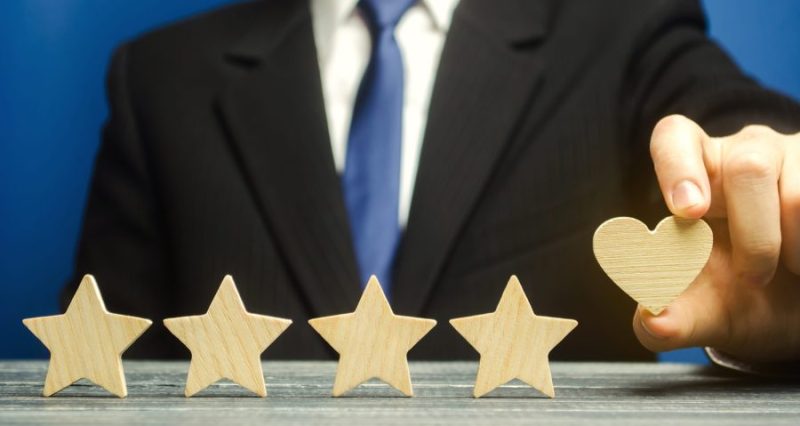 Today, you probably examine online reviews before visiting a restaurant, motel, or service department. In this digital age, removing the veil on what corporations, products, and services want us to believe about their business versus what consumers have really experienced with their organization is instinctive. Today, they want the good, bad, and ugly upfront so they can make an informed choice.
Every dealer should understand how FTC’s new review collection and display standards will affect their business. Why? Our study shows that 93% of car purchasers utilize customer reviews to choosing a dealership. 93%!! It couldn’t be clearer that you need to tighten up your review and reputation management plan before you lose clients you didn’t even know you had.
Check your Google Business Profile, get online reviews flowing, audit review websites, and set up a powerful CX plan to use customer reviews to grow your business.
What’s new?
Starting April 26, 2022, FTC guidelines require both positive and negative reviews to be published instantly without a holding period.
DealerRater, an industry partner, said its Community Guidelines will filter reviews that don’t fit their standards, but all reviews will be shown promptly. DealerRater often holds bad ratings for 14 days before publishing, giving dealers time to manage.
Why do you care?
Every minute a negative review remains online without a company response could cost the organization new business. 8% of buyers didn’t contact a dealership due to unfavorable reviews and/or treatment.
SimpSocial dealer partners must monitor and respond immediately.
Dealers can: continuously check the dealership’s reputation on many major sites
rapidly connecting to consumers boosts the reputation
promote good ratings and effectively reply to negative ones or help settle disagreements, producing even more reviews because most consumers give positive reviews (81% for purchases, 88% for service) when prompted.
We added a couple of extra tools for quick awareness and response since reviews are time-sensitive:
SimpSocial automatically gathers reviews, removing the need to log in and check for pending publishing reviews.
DealerRater’s “resolved” button will alert consumers to amend their reviews.
Online reputation management is crucial. Due to a vehicle inventory shortage, increasing interest rates, online national retailers moving into local stores, and staffing shortages, consumers are constantly searching online for vehicles that meet their needs, budget, and timeline. Dealers must avoid losing sales due to unfavorable reviews or unsatisfactory responses.
SimpSocial will help your store stand out from internet sellers and local dealers alike.
Today, you probably examine online reviews before visiting a restaurant, motel, or service department. In this digital age, removing the veil on what corporations, products, and services want us to believe about their business versus what consumers have really experienced with their organization is instinctive. Today, they want the good, bad, and ugly upfront so they can make an informed choice.
Every dealer should understand how FTC’s new review collection and display standards will affect their business. Why? Our study shows that 93% of car purchasers utilize customer reviews to choosing a dealership. 93%!! It couldn’t be clearer that you need to tighten up your review and reputation management plan before you lose clients you didn’t even know you had.
Check your Google Business Profile, get online reviews flowing, audit review websites, and set up a powerful CX plan to use customer reviews to grow your business.
What’s new?
Starting April 26, 2022, FTC guidelines require both positive and negative reviews to be published instantly without a holding period.
DealerRater, an industry partner, said its Community Guidelines will filter reviews that don’t fit their standards, but all reviews will be shown promptly. DealerRater often holds bad ratings for 14 days before publishing, giving dealers time to manage.
Why do you care?
Every minute a negative review remains online without a company response could cost the organization new business. 8% of buyers didn’t contact a dealership due to unfavorable reviews and/or treatment.
SimpSocial dealer partners must monitor and respond immediately.
Dealers can: continuously check the dealership’s reputation on many major sites
rapidly connecting to consumers boosts the reputation
promote good ratings and effectively reply to negative ones or help settle disagreements, producing even more reviews because most consumers give positive reviews (81% for purchases, 88% for service) when prompted.
We added a couple of extra tools for quick awareness and response since reviews are time-sensitive:
SimpSocial automatically gathers reviews, removing the need to log in and check for pending publishing reviews.
DealerRater’s “resolved” button will alert consumers to amend their reviews.
Online reputation management is crucial. Due to a vehicle inventory shortage, increasing interest rates, online national retailers moving into local stores, and staffing shortages, consumers are constantly searching online for vehicles that meet their needs, budget, and timeline. Dealers must avoid losing sales due to unfavorable reviews or unsatisfactory responses.
SimpSocial will help your store stand out from internet sellers and local dealers alike.  After attracting new customers to your dealership, you need automotive digital marketing tools to convert them into purchasers.
To satisfy customers, dealers must increase customer service and communication. Implementing the right technology will improve the customer experience and help your organization grow.
Online engagement will help your dealership sell. Technology can help with pandemic-exacerbated labor shortages.
Dynamic 24/7 lead response, AI chat, personalized videos, top inventory merchandising sites, and online credit prequalification are essential automobile digital marketing methods.
AI lead response software generates customized quotations.
Customers like ongoing communication and rapid responses. It’s the best method to keep customers coming back. AI handles these responses and follows up on leads promptly and routinely.
The SimpSocial Response Logix solution boosts your dealership’s visibility and customer experience to sell more cars.
Kia of Alhambra sought a simple way to reply to leads online and follow up with prospective car purchasers. Response Logix from SimpSocial helped the California auto dealership close more internet leads and never miss a lead during employee changes.
Kia of Alhambra’s general manager claimed Response Logix helps quote all internet leads and improves follow-up. “Many reactivated leads!”
Response Logix automatically replies to leads within 10 minutes 24/7, making it essential to automobile digital marketing. Due to inventory shortages, the technology emails a quote with numerous new and used vehicle selections and the vehicle car customers inquired about.
AI-powered chatbots convert more leads.
Your website, Facebook page, and text message AI chat helpers offer the finest first impression by answering numerous initial queries. Your dealership needs AI to answer qualifying questions, make appointments, and direct conversations to the right team member when human support is needed.
Brown’s Fairfax Nissan wanted to boost lead volume and conversion rates through messaging.SimpSocial Response Path helps the Virginia car dealership engage customers 24/7 and increase leads from their website and Facebook page.
Brown’s Fairfax Nissan’s general manager said Response Path improves customer service and leads capture and conversion. “Response Path is helping us book appointments with car buyers and service customers, and our closing ratio is 31%.”
Response Path enhances your automotive digital marketing solutions by engaging customers and converting more leads 24/7. AI optimizes your dealership.
Video-engage customers
Easy-to-use video lead engagement technology records sends and monitors videos so your dealership can communicate with customers and display your brand in the most favored medium.
Online research and communication have increased consumer video viewing. Learning the best video methods to sell and service more is crucial.
70% of people prefer watching a brief video to learn about a new product or service, and 78% watch web videos weekly. Record product characteristics, safety measures, and special offers with your tech-savvy personnel or a trusted partner like SimpSocial.Custom videos are great for email and text marketing in automobile digital marketing.
Muller Honda of Gurnee wanted to easily record a sales event video. Video Logix and Response Path Power Text texted over 20,000 customers the video link. One video link sold five automobiles at the Chicago dealership. Text drove thousands of video views.
“It was simple. Easy setup. The Muller Honda of Gurnee marketing manager claimed everything was easy.
Boost inventory management
Automotive digital marketing should include inventory merchandising. Posting your automobiles on YouTube, Facebook, BestRide, and Google will attract targeted buyers and improve customer engagement.
Despite inventory pricing and sourcing issues, you must efficiently package your autos to new car buyers. These top sites will help your auto dealership surpass sales targets and improve customer service.
SimpSocial optimizes SEO on YouTube’s second-largest search engine by creating VIN-specific videos for each vehicle in your inventory. Your digital marketing solutions need high-quality films since 75% of auto consumers claim internet video influences their shopping behavior.
Facebook Marketplace updated recently. SimpSocial may promote your new and used automobile inventory on Facebook. 73% of automobile buyers use Facebook the most. Real-time virtual showrooms display vehicle inventory on your business page.
Dealers can also advertise their vehicles on BestRide.com through SimpSocial. Eighty-six percent of auto purchasers use BestRide.com’s interactive business-to-consumer marketplace and buy a car within two weeks.
Google Business Profiles should include live vehicle inventory. Your Google profile should have updated discounts, hours, and vehicle inventory as 8 out of 10 consumers don’t visit on your website. SimpSocial automatically posts your dealership’s live vehicle inventory, saving your staff time and effort.
Simplify buying.
Prequalify car purchasers online so they know what they can buy.SimpSocial Credit Logix eliminates guessing and speeds up the buying process for all consumers, including those with bad credit.
Royal Automotive Group converted 60% with Credit Logix. Arizona dealer’s car digital marketing solutions depend on credit tool. Why bother selling an unaffordable car?
Royal Automotive’s marketing manager remarked, “Our deals fund faster with our approval time down to 18-23 minutes. “Our average subprime buyer conversion increased from 30% to 60%. Our sales doubled.”
SimpSocial sales enablement team and solutions can help manage all these tools and strategies. Today’s market makes hiring and managing leads difficult, but the appropriate technology and people can convert dealers’ sales and service prospects.
McClinton Chevy Mitsubishi boosts sales, cuts costs, and solves personnel issues with SimpSocial Sales Boost. Sales Boost handles inbound internet leads, outbound calls, and sales and service appointment scheduling for the West Virginia dealership.
“We’re selling more cars and exceeding our sales goals with SimpSocial,” said McClinton Chevrolet Mitsubishi’s major owner. “Their technology and team handle all our inbound leads, delivering great results daily.”
After attracting new customers to your dealership, you need automotive digital marketing tools to convert them into purchasers.
To satisfy customers, dealers must increase customer service and communication. Implementing the right technology will improve the customer experience and help your organization grow.
Online engagement will help your dealership sell. Technology can help with pandemic-exacerbated labor shortages.
Dynamic 24/7 lead response, AI chat, personalized videos, top inventory merchandising sites, and online credit prequalification are essential automobile digital marketing methods.
AI lead response software generates customized quotations.
Customers like ongoing communication and rapid responses. It’s the best method to keep customers coming back. AI handles these responses and follows up on leads promptly and routinely.
The SimpSocial Response Logix solution boosts your dealership’s visibility and customer experience to sell more cars.
Kia of Alhambra sought a simple way to reply to leads online and follow up with prospective car purchasers. Response Logix from SimpSocial helped the California auto dealership close more internet leads and never miss a lead during employee changes.
Kia of Alhambra’s general manager claimed Response Logix helps quote all internet leads and improves follow-up. “Many reactivated leads!”
Response Logix automatically replies to leads within 10 minutes 24/7, making it essential to automobile digital marketing. Due to inventory shortages, the technology emails a quote with numerous new and used vehicle selections and the vehicle car customers inquired about.
AI-powered chatbots convert more leads.
Your website, Facebook page, and text message AI chat helpers offer the finest first impression by answering numerous initial queries. Your dealership needs AI to answer qualifying questions, make appointments, and direct conversations to the right team member when human support is needed.
Brown’s Fairfax Nissan wanted to boost lead volume and conversion rates through messaging.SimpSocial Response Path helps the Virginia car dealership engage customers 24/7 and increase leads from their website and Facebook page.
Brown’s Fairfax Nissan’s general manager said Response Path improves customer service and leads capture and conversion. “Response Path is helping us book appointments with car buyers and service customers, and our closing ratio is 31%.”
Response Path enhances your automotive digital marketing solutions by engaging customers and converting more leads 24/7. AI optimizes your dealership.
Video-engage customers
Easy-to-use video lead engagement technology records sends and monitors videos so your dealership can communicate with customers and display your brand in the most favored medium.
Online research and communication have increased consumer video viewing. Learning the best video methods to sell and service more is crucial.
70% of people prefer watching a brief video to learn about a new product or service, and 78% watch web videos weekly. Record product characteristics, safety measures, and special offers with your tech-savvy personnel or a trusted partner like SimpSocial.Custom videos are great for email and text marketing in automobile digital marketing.
Muller Honda of Gurnee wanted to easily record a sales event video. Video Logix and Response Path Power Text texted over 20,000 customers the video link. One video link sold five automobiles at the Chicago dealership. Text drove thousands of video views.
“It was simple. Easy setup. The Muller Honda of Gurnee marketing manager claimed everything was easy.
Boost inventory management
Automotive digital marketing should include inventory merchandising. Posting your automobiles on YouTube, Facebook, BestRide, and Google will attract targeted buyers and improve customer engagement.
Despite inventory pricing and sourcing issues, you must efficiently package your autos to new car buyers. These top sites will help your auto dealership surpass sales targets and improve customer service.
SimpSocial optimizes SEO on YouTube’s second-largest search engine by creating VIN-specific videos for each vehicle in your inventory. Your digital marketing solutions need high-quality films since 75% of auto consumers claim internet video influences their shopping behavior.
Facebook Marketplace updated recently. SimpSocial may promote your new and used automobile inventory on Facebook. 73% of automobile buyers use Facebook the most. Real-time virtual showrooms display vehicle inventory on your business page.
Dealers can also advertise their vehicles on BestRide.com through SimpSocial. Eighty-six percent of auto purchasers use BestRide.com’s interactive business-to-consumer marketplace and buy a car within two weeks.
Google Business Profiles should include live vehicle inventory. Your Google profile should have updated discounts, hours, and vehicle inventory as 8 out of 10 consumers don’t visit on your website. SimpSocial automatically posts your dealership’s live vehicle inventory, saving your staff time and effort.
Simplify buying.
Prequalify car purchasers online so they know what they can buy.SimpSocial Credit Logix eliminates guessing and speeds up the buying process for all consumers, including those with bad credit.
Royal Automotive Group converted 60% with Credit Logix. Arizona dealer’s car digital marketing solutions depend on credit tool. Why bother selling an unaffordable car?
Royal Automotive’s marketing manager remarked, “Our deals fund faster with our approval time down to 18-23 minutes. “Our average subprime buyer conversion increased from 30% to 60%. Our sales doubled.”
SimpSocial sales enablement team and solutions can help manage all these tools and strategies. Today’s market makes hiring and managing leads difficult, but the appropriate technology and people can convert dealers’ sales and service prospects.
McClinton Chevy Mitsubishi boosts sales, cuts costs, and solves personnel issues with SimpSocial Sales Boost. Sales Boost handles inbound internet leads, outbound calls, and sales and service appointment scheduling for the West Virginia dealership.
“We’re selling more cars and exceeding our sales goals with SimpSocial,” said McClinton Chevrolet Mitsubishi’s major owner. “Their technology and team handle all our inbound leads, delivering great results daily.”  “Connected Car” is the industry buzzword, but we should be talking about “Connected Consumer.”
The auto industry has been obsessed with the “connected car” and all the components needed to aggregate vehicle data and information for future product development, service opportunities, and more for over 10 years.
With all the talk about the connected car, we’ve lost sight of the goal: connecting with consumers and building a loyal, connected customer base.
Today’s car has 176 “connection points.” The automobile collects data like a software platform. Driving habits, vehicle performance, and communication with drivers, service providers, emergency operators, dealerships, OEMs, etc.
The consumer has hundreds of touchpoints, 36 of which are purchase and ownership touchpoints. DMV, insurance, F&I, lender, and dealership.
Dealers may interact with them personally and profoundly in many ways. Dealers, lenders, OEMs, and F&I suppliers all want to provide customers with fast, relevant messages via the best media. Technology and data are used throughout the customer journey. The vehicle is ideal for addressing captive audiences.
Connecting Consumers to Cars
SimpSocial released its 9th Annual Automotive Customer Experience Trends Study in March 2022. We asked 5,000 consumers about dealerships, vehicle inventory shortages, and car purchase and service decisions.
Four major observations showed consumers seek individualized communication.
High Need-to-Know. 20% claimed the dealer didn’t update them on their vehicle order.
Unanswered is bad. 31% stated a dealership didn’t respond to their vehicle buying inquiry. It rose from 6%.
They Said. Online reviews influenced dealership selection for 93% of vehicle buyers and 87% of service customers.
Be flexible. Streaming entertainment is preferred by many viewers. 70% streamed movies, sports, and entertainment. Consumer communication is unexplored in streaming commercials.
Modern technology is great. There’s absolutely no reason to skip a chance to meaningfully connect with consumers to improve the customer experience. Dealers may use car data and platforms to build loyalty, engagement, and service, sales, and F&I revenue.
How can you optimize the linked car-consumer relationship? Audit your consumer communications to find weaknesses. This examines a store’s online presence, communication, and audience. Most dealers are astonished by the gap between how they see themselves and how customers see them.
Request a sample or our free SimpSocial online reputation audit report to uncover the connected communications gap.
“Connected Car” is the industry buzzword, but we should be talking about “Connected Consumer.”
The auto industry has been obsessed with the “connected car” and all the components needed to aggregate vehicle data and information for future product development, service opportunities, and more for over 10 years.
With all the talk about the connected car, we’ve lost sight of the goal: connecting with consumers and building a loyal, connected customer base.
Today’s car has 176 “connection points.” The automobile collects data like a software platform. Driving habits, vehicle performance, and communication with drivers, service providers, emergency operators, dealerships, OEMs, etc.
The consumer has hundreds of touchpoints, 36 of which are purchase and ownership touchpoints. DMV, insurance, F&I, lender, and dealership.
Dealers may interact with them personally and profoundly in many ways. Dealers, lenders, OEMs, and F&I suppliers all want to provide customers with fast, relevant messages via the best media. Technology and data are used throughout the customer journey. The vehicle is ideal for addressing captive audiences.
Connecting Consumers to Cars
SimpSocial released its 9th Annual Automotive Customer Experience Trends Study in March 2022. We asked 5,000 consumers about dealerships, vehicle inventory shortages, and car purchase and service decisions.
Four major observations showed consumers seek individualized communication.
High Need-to-Know. 20% claimed the dealer didn’t update them on their vehicle order.
Unanswered is bad. 31% stated a dealership didn’t respond to their vehicle buying inquiry. It rose from 6%.
They Said. Online reviews influenced dealership selection for 93% of vehicle buyers and 87% of service customers.
Be flexible. Streaming entertainment is preferred by many viewers. 70% streamed movies, sports, and entertainment. Consumer communication is unexplored in streaming commercials.
Modern technology is great. There’s absolutely no reason to skip a chance to meaningfully connect with consumers to improve the customer experience. Dealers may use car data and platforms to build loyalty, engagement, and service, sales, and F&I revenue.
How can you optimize the linked car-consumer relationship? Audit your consumer communications to find weaknesses. This examines a store’s online presence, communication, and audience. Most dealers are astonished by the gap between how they see themselves and how customers see them.
Request a sample or our free SimpSocial online reputation audit report to uncover the connected communications gap.  Despite the hype about online retailers like Carvana snatching clients from local dealers, many dealers see their biggest competition as other local dealers. In our previous webinar, approximately 75% of dealers said a local dealer of the same brand, followed by a nearby dealer of a different brand, kept them up at night.
We needed to know this because the new and used vehicle industry is competitive, and we want to provide the best-focused solutions to help dealers beat their competition.
Google Vehicle Ads is our latest inventory merchandising solution. Discover more here. This carousel of dealers’ vehicles at the top of the search page links to their website’s VDP (Vehicle Details Page), keeping shoppers close.
Google a vehicle and see what appears in the advertisement’s carousel. Since the functionality is rolling out, you may need to reload it a few times. Your dealership? If not, start! Ready to enroll? Contact us to get started. Fill out the form or contact demo@simpsocial.com.
Despite the hype about online retailers like Carvana snatching clients from local dealers, many dealers see their biggest competition as other local dealers. In our previous webinar, approximately 75% of dealers said a local dealer of the same brand, followed by a nearby dealer of a different brand, kept them up at night.
We needed to know this because the new and used vehicle industry is competitive, and we want to provide the best-focused solutions to help dealers beat their competition.
Google Vehicle Ads is our latest inventory merchandising solution. Discover more here. This carousel of dealers’ vehicles at the top of the search page links to their website’s VDP (Vehicle Details Page), keeping shoppers close.
Google a vehicle and see what appears in the advertisement’s carousel. Since the functionality is rolling out, you may need to reload it a few times. Your dealership? If not, start! Ready to enroll? Contact us to get started. Fill out the form or contact demo@simpsocial.com.  Bernstein’s 38th Annual Strategic Decisions Conference is noteworthy. Ford CEO Jim Farley’s lecture on car retail’s future shocked dealers. Dealers have been talking about how it affects them and consumers. He discussed OEM direct-to-consumer sales, one price, no public advertising, EVs, dealership transformation, and standardizing services like pick-up and delivery.
Whether you agree with Farley’s vision or not, auto retail is always changing, and your dealership must keep up to win the sale and earn long-term customer loyalty. Recognizing that one size does not fit all, dealers must leverage the finest technology, solutions, and processes to provide the best client experience.
Lean on automated technology to help your team manage ads, emails, SMS, and social media. We have all your work-free solutions.
Bernstein’s 38th Annual Strategic Decisions Conference is noteworthy. Ford CEO Jim Farley’s lecture on car retail’s future shocked dealers. Dealers have been talking about how it affects them and consumers. He discussed OEM direct-to-consumer sales, one price, no public advertising, EVs, dealership transformation, and standardizing services like pick-up and delivery.
Whether you agree with Farley’s vision or not, auto retail is always changing, and your dealership must keep up to win the sale and earn long-term customer loyalty. Recognizing that one size does not fit all, dealers must leverage the finest technology, solutions, and processes to provide the best client experience.
Lean on automated technology to help your team manage ads, emails, SMS, and social media. We have all your work-free solutions.  We knew the situation was dire. However, our own car-shopping experiences allowed us to understand the frustration. From having to wait too long for information to repeatedly retelling our stories to different departments, the entire experience was disappointing.
Dealershipsavaging, disjointed, constant dialogue, and competitive interactions. not a helpful, continuous discourse, as we have come to expect from brands.
We delve into the rationale behind shifting focus from sales to conversations, the anatomy of an engaging conversation, and how to use conversations to enhance the consumer experience.
If you are not persuaded, go buy a car.
What is amiss with the current sales-driven strategy?
When prospective customers initiate contact, they are promptly added to a sales pipeline. a linear sequence of events designed to move prospects from unqualified leads to qualified leads and, if all goes according to plan, to a sale.
Several errors exist here.
Customers are frustrated by the typical sales process.
The traditional sales pipeline hinders the connection between customers and enterprises. Often, just establishing the initial connection requires a lengthy game of back-and-forth in which both parties give up.
Retailers must qualify leads and pursue them via phone and email multiple times before making contact. Leads are required to complete forms, wait unhappily for a callback, listen to voicemails, and wait again. As they progress through the process, they interact with numerous departments, including BDC, sales, and finance, among others.
The language used by those who wish to conduct commerce with you.
The manner in which businesses discuss their consumers reveals how much they value them. When businesses discuss individuals in terms of leads and sales, the business-customer relationship is transactional from the outset and concentrates on the monetary value a customer represents.
The procedure lacks consistency. It is not personal. It is not human-centered. It is the antithesis of what makes modern consumers excited.
What do engaging dialogues entail?
Engaging dialogues necessitate connecting with consumers in real-time to facilitate their transition from one stage of their customer journey to the next. Customers engage in a continuous dialogue with your brand, both in-person and across devices and applications.
By enabling automotive consumers to connect with your company when, how, and where they choose, you can eliminate friction along the customer journey and create the standard of customer experience that consumers now expect from every brand with which they choose to engage.
It is presently impossible for sales teams to provide instant and helpful responses to every single end user without assistance. For auto retailers to achieve this at scale, conversation-automating technology is essential.
The structure of a captivating discourse
Constantly, dealerships have constant dialogue with prospects and customers. But not all conversations are made equal. Engaging conversations combine the basic elements of human communication and more recent expectations driven by communications technology.
Let’s first remind ourselves of the basics.
The definition of a conversation is, and always has been, an informal exchange of ideas and information between people. And whether chatting with friends or businesses, “people expect conversations to be helpful, personal, and empathetic.” We’ll explain.
Helpful. Customers begin conversations with an intended outcome. Maybe they want more information on prices or specs, or they want to book a vehicle inspection. Dealerships need to give relevant answers to help customers reach their goals quickly.
Personal. No one wants to feel like a number. Customers want to feel like brands are carving out time to have one-on-one conversations with them. Personalizing conversations includes using the customer’s name and tailoring recommendations based on their knowledge or preferences. This makes customers feel valued and more likely to remain loyal.
Empathetic. This is the opposite of the more apathetic traditional marketing and sales techniques, where sellers do most of the talking. People want to feel like they are listened to and understood. This means that customers must have control of the conversation—they ask questions, they choose when to engage. Retailers must listen carefully and respond when the opportunity arises.
Second, we need to take into context the modern-day influences that are shaping conversations. Messaging technology is shifting customer behavior and leading consumer brands are setting new standards. Conversations also need to be:
In the right place. Many consumer-business conversations happen in the digital sphere, via SMS, instant messaging apps, chatbots, or social media. Dealerships need to meet customers wherever they are or lose out to competitors that readily communicate via these platforms.
At the right time. Customers don’t like hanging around for answers. They expect brands to respond almost instantaneously to messages. (Even at 3am, when your sales team is sleeping.) Conversational platforms allow dealerships to automate immediate responses to queries no matter the time and no matter the scale. Without the need for sales and support to work around the clock.
Improving the end-to-end customer experience with engaging conversations
We touched on some of the pain points customers experience in the “sales pipeline.” This is only a snapshot of the bigger picture. Pain points span the end-to-end automotive customer journey, from pre-purchase to customer service, to the end of the relationship. A direct consequence is painfully low customer satisfaction and loyalty.
Yet auto dealers still have the opportunity to turn this around. Enabling real-time conversations across the customer journey can directly impact the customer experience and their loyalty to your company.
Let’s see how dealerships can use conversations during the purchase journey, customer service, and beyond.
Nurture new contacts
In the run-up to purchase, potential buyers typically interact multiple times with dealerships via a number of platforms. They want answers quickly. After just five minutes, lead response times significantly decline.
This creates chaos for sales teams. We see it all the time. Sales agents bust a gut to find every incoming message and reply in quickly time. But the sheer volume of messages is too much to handle and responses are delayed. In the end, potential customers lose patience and find answers elsewhere.
Dealerships can take advantage of real-time conversations to reply to incoming queries quickly and keep customers engaged. Dealers can set up automatic messages and message sequences to new inquiries so they can send out relevant replies to queries as and when they come in. At the least, this helps to keep the buyer connected until a member of your team can engage in a deeper conversation.
For the business, not only can speed keep customers in your sales funnel, it can potentially reduce the time they stay there and increase your ROI.
Improve customer service satisfaction
Any dealership can see that customer loyalty is declining. A number of factors are to blame, but customer service (or lack of) is a big one. According to a Microsoft survey, 95% of 5,000 respondents said that customer service influences their loyalty to a brand. With tunnel vision for closing the deal, dealers are unable to give customers the level of service they expect.
Real-time conversations enable customers to communicate how and when they want with the automotive service team. This can help customers troubleshoot minor issues out of working hours, or keep them engaged until a service technician is available. Conversation bots can also schedule service appointments, which makes the process quicker and easier for customers and the dealer.
Plus, car dealers can automate sales follow-ups without even having to pick up the phone. For instance, you can automatically send a friendly SMS to check on all customers that purchased within the past few days or remind them later on to book a vehicle service check-up.
Re-engage long-lost contacts
Sales teams are grafting to respond to prospective buyers, yet old contacts haven’t heard a peep from you in years. Your customers are much more likely to purchase from you than non-customers. So, why do most auto retailers focus more on nurturing new “leads” than old ones?”
Hey, we know it’s not easy. Dealerships don’t have departments dedicated to re-engaging, so it takes time and manpower you don’t have. This is where real-time conversations come in. They allow you to automate the re-engagement process by initiating conversations with all those contacts who purchased months, years, or even decades ago.
For example, you could automatically engage with customers who bought, say, over five years ago to see if they want to trade up their model or send an automated reminder to customers whose lease warranty will soon expire.
Automotive consumers are unhappy about dealerships’ “lack of interest [and failure] to interact” once the sale is done, according to Deloitte research. Keeping the conversation going afterward with the help of technology isn’t just the perfect antidote, it also gives them a good reason to stay loyal.
Nothing gives you better insight into your customers’ experience than putting yourself in their shoes.
We knew the situation was dire. However, our own car-shopping experiences allowed us to understand the frustration. From having to wait too long for information to repeatedly retelling our stories to different departments, the entire experience was disappointing.
Dealershipsavaging, disjointed, constant dialogue, and competitive interactions. not a helpful, continuous discourse, as we have come to expect from brands.
We delve into the rationale behind shifting focus from sales to conversations, the anatomy of an engaging conversation, and how to use conversations to enhance the consumer experience.
If you are not persuaded, go buy a car.
What is amiss with the current sales-driven strategy?
When prospective customers initiate contact, they are promptly added to a sales pipeline. a linear sequence of events designed to move prospects from unqualified leads to qualified leads and, if all goes according to plan, to a sale.
Several errors exist here.
Customers are frustrated by the typical sales process.
The traditional sales pipeline hinders the connection between customers and enterprises. Often, just establishing the initial connection requires a lengthy game of back-and-forth in which both parties give up.
Retailers must qualify leads and pursue them via phone and email multiple times before making contact. Leads are required to complete forms, wait unhappily for a callback, listen to voicemails, and wait again. As they progress through the process, they interact with numerous departments, including BDC, sales, and finance, among others.
The language used by those who wish to conduct commerce with you.
The manner in which businesses discuss their consumers reveals how much they value them. When businesses discuss individuals in terms of leads and sales, the business-customer relationship is transactional from the outset and concentrates on the monetary value a customer represents.
The procedure lacks consistency. It is not personal. It is not human-centered. It is the antithesis of what makes modern consumers excited.
What do engaging dialogues entail?
Engaging dialogues necessitate connecting with consumers in real-time to facilitate their transition from one stage of their customer journey to the next. Customers engage in a continuous dialogue with your brand, both in-person and across devices and applications.
By enabling automotive consumers to connect with your company when, how, and where they choose, you can eliminate friction along the customer journey and create the standard of customer experience that consumers now expect from every brand with which they choose to engage.
It is presently impossible for sales teams to provide instant and helpful responses to every single end user without assistance. For auto retailers to achieve this at scale, conversation-automating technology is essential.
The structure of a captivating discourse
Constantly, dealerships have constant dialogue with prospects and customers. But not all conversations are made equal. Engaging conversations combine the basic elements of human communication and more recent expectations driven by communications technology.
Let’s first remind ourselves of the basics.
The definition of a conversation is, and always has been, an informal exchange of ideas and information between people. And whether chatting with friends or businesses, “people expect conversations to be helpful, personal, and empathetic.” We’ll explain.
Helpful. Customers begin conversations with an intended outcome. Maybe they want more information on prices or specs, or they want to book a vehicle inspection. Dealerships need to give relevant answers to help customers reach their goals quickly.
Personal. No one wants to feel like a number. Customers want to feel like brands are carving out time to have one-on-one conversations with them. Personalizing conversations includes using the customer’s name and tailoring recommendations based on their knowledge or preferences. This makes customers feel valued and more likely to remain loyal.
Empathetic. This is the opposite of the more apathetic traditional marketing and sales techniques, where sellers do most of the talking. People want to feel like they are listened to and understood. This means that customers must have control of the conversation—they ask questions, they choose when to engage. Retailers must listen carefully and respond when the opportunity arises.
Second, we need to take into context the modern-day influences that are shaping conversations. Messaging technology is shifting customer behavior and leading consumer brands are setting new standards. Conversations also need to be:
In the right place. Many consumer-business conversations happen in the digital sphere, via SMS, instant messaging apps, chatbots, or social media. Dealerships need to meet customers wherever they are or lose out to competitors that readily communicate via these platforms.
At the right time. Customers don’t like hanging around for answers. They expect brands to respond almost instantaneously to messages. (Even at 3am, when your sales team is sleeping.) Conversational platforms allow dealerships to automate immediate responses to queries no matter the time and no matter the scale. Without the need for sales and support to work around the clock.
Improving the end-to-end customer experience with engaging conversations
We touched on some of the pain points customers experience in the “sales pipeline.” This is only a snapshot of the bigger picture. Pain points span the end-to-end automotive customer journey, from pre-purchase to customer service, to the end of the relationship. A direct consequence is painfully low customer satisfaction and loyalty.
Yet auto dealers still have the opportunity to turn this around. Enabling real-time conversations across the customer journey can directly impact the customer experience and their loyalty to your company.
Let’s see how dealerships can use conversations during the purchase journey, customer service, and beyond.
Nurture new contacts
In the run-up to purchase, potential buyers typically interact multiple times with dealerships via a number of platforms. They want answers quickly. After just five minutes, lead response times significantly decline.
This creates chaos for sales teams. We see it all the time. Sales agents bust a gut to find every incoming message and reply in quickly time. But the sheer volume of messages is too much to handle and responses are delayed. In the end, potential customers lose patience and find answers elsewhere.
Dealerships can take advantage of real-time conversations to reply to incoming queries quickly and keep customers engaged. Dealers can set up automatic messages and message sequences to new inquiries so they can send out relevant replies to queries as and when they come in. At the least, this helps to keep the buyer connected until a member of your team can engage in a deeper conversation.
For the business, not only can speed keep customers in your sales funnel, it can potentially reduce the time they stay there and increase your ROI.
Improve customer service satisfaction
Any dealership can see that customer loyalty is declining. A number of factors are to blame, but customer service (or lack of) is a big one. According to a Microsoft survey, 95% of 5,000 respondents said that customer service influences their loyalty to a brand. With tunnel vision for closing the deal, dealers are unable to give customers the level of service they expect.
Real-time conversations enable customers to communicate how and when they want with the automotive service team. This can help customers troubleshoot minor issues out of working hours, or keep them engaged until a service technician is available. Conversation bots can also schedule service appointments, which makes the process quicker and easier for customers and the dealer.
Plus, car dealers can automate sales follow-ups without even having to pick up the phone. For instance, you can automatically send a friendly SMS to check on all customers that purchased within the past few days or remind them later on to book a vehicle service check-up.
Re-engage long-lost contacts
Sales teams are grafting to respond to prospective buyers, yet old contacts haven’t heard a peep from you in years. Your customers are much more likely to purchase from you than non-customers. So, why do most auto retailers focus more on nurturing new “leads” than old ones?”
Hey, we know it’s not easy. Dealerships don’t have departments dedicated to re-engaging, so it takes time and manpower you don’t have. This is where real-time conversations come in. They allow you to automate the re-engagement process by initiating conversations with all those contacts who purchased months, years, or even decades ago.
For example, you could automatically engage with customers who bought, say, over five years ago to see if they want to trade up their model or send an automated reminder to customers whose lease warranty will soon expire.
Automotive consumers are unhappy about dealerships’ “lack of interest [and failure] to interact” once the sale is done, according to Deloitte research. Keeping the conversation going afterward with the help of technology isn’t just the perfect antidote, it also gives them a good reason to stay loyal.
Nothing gives you better insight into your customers’ experience than putting yourself in their shoes. 


To make sure that no leads slip between the cracks, a dealership must implement a strong follow-up strategy. Making the most of each lead that comes your way is essential given the fierce competition in the automotive market. Sadly, a lot of dealerships have trouble following up on long-term leads, which results in missed opportunities and dropped sales.
The explanation for this is straightforward: lead follow-up is a laborious operation that takes a lot of time and resources. It can be difficult to keep track of every lead and make sure they get the attention they require when there are so many to maintain. Automation becomes important in this situation. Using technology will enable you to automate the lead follow-up procedure and make sure that no lead is overlooked.
The ability to keep organized is one of the main advantages of automation. By using a text messaging platform, you can keep track of every lead you have in one spot, making it simple to determine which ones need to be followed up on and when. In order to guarantee that you never miss a follow-up opportunity, you may also set up automated communications.
Automation also gives you the ability to customize your follow-up actions. You may establish a rapport with your leads and improve your chances of closing a deal by using a text messaging platform to send them tailored messages. Moreover, personalization can assist you in overcoming typical obstacles and addressing any queries a lead may have.
Automation can also help you save time and resources in addition to these advantages. By using a text messaging software, you can automate a lot of the follow-up procedure and give your sales team more time to work on other projects. This can boost your production and efficiency, resulting in more sales and a better return on investment.
In summary, long-term lead follow-up is an essential part of any profitable dealership. Using technology and automation will help you stay organized, customize your efforts, and save time and money while streamlining your follow-up procedure. By using a text messaging network, you can make sure that no lead is overlooked and that every opportunity is thoroughly investigated.


Some things in the marketing industry will never change, despite the fact that it grows rapidly every year. One of these is successful marketing. Even if you offer the best goods and services available, your business may fail if you are unable to connect with your target market. Keep up with the times if you want to succeed in today’s ever-evolving environment. The fiercely competitive world of the car business is the place where this is most obvious. Count on SimpSocial to put your company on the road to success.
The beginning of a new automotive era
Like other technology fields, the automotive business is always evolving to meet consumer needs. The process of buying a car is about to undergo a major transformation, and dealerships may soon see a decline in traffic in favor of online shopping. Being at the forefront of technology is more crucial than ever as EVs (Electric Vehicles) become more widely available.
Why Choosing SimpSocial Is the Greatest Decision You’ll Ever Make
You might say we’ve made a name for ourselves in the field of social media advertising with a 99% efficacy rate. The target audience of today doesn’t watch television with an open mind to a well-placed commercial’s sales pitch. We are equipped to effectively reach your clientele on the many social media channels where they are active.
Using Data Research for the Best Outcomes
Market research teams used to meet for hours at a time to figure out the best method to reach potential clients. The game has changed today. Even though market research is still being done, it is based on data that has been gathered, allowing us to target the correct audience at the right time. There is no longer a “throw stuff at the wall and see what sticks” mentality. There is only one implementation strategy that can be relied upon to work.
Better Content is Achieved by Innovative Thinking
Our crew is extremely motivated and aware of the need for the best possible outcomes. Our team includes specialists in design, animation, and direction. We have worked with prestigious firms like BMW and Bentley, and we can also get the best outcomes for your business.
SimpSocial will assist you in connecting with your clientele in ways you might not have anticipated. Even if the automobile industry has been changing, the desire to succeed and be the best will always be present. Visit SimpSocial.com to learn more and get moving toward a fresh start.

Dealerships spend a lot of money on lead generation initiatives including marketing, advertising, and lead creation campaigns. Due to lead abandonment, the practice of losing up on leads after a certain amount of time, many dealerships struggle to turn those leads into sales. InsideSales.com found that sales representatives often lose up on a lead after just 1.3 contact attempts. This means that even if they first indicated an interest in a product or service, many potential clients are never approached again.
For dealerships, the effects of lead abandonment can be expensive. Every lead is a prospective customer, and ineffective follow-up results in missed sales. Also, it is expensive to generate leads, particularly in light of the fact that we are aware that dealerships employ expensive marketing strategies like paid advertising. That investment is practically lost if those leads are not adequately developed and converted.
Lead abandonment causes include:
Dealerships may struggle with lead abandonment for a number of reasons. Lack of resources is one frequent cause. It’s possible that sales representatives are overworked or understaffed to follow up with prospects properly. Dealerships occasionally might not have the tools or technology necessary to manage leads efficiently.
Ineffective lead nurturing tactics are another factor in lead abandonment. It’s possible that salespeople lack a clear knowledge of how to follow up with leads or that they lack the information necessary to tailor their conversations. This may result in follow-up messages that are impersonal or pointless and fail to connect with the customer or meet their needs.
Lead abandonment remedies include:
Dealerships must adopt an all-encompassing strategy that addresses the underlying reasons for the lead abandonment problem. Purchasing software or hiring more personnel is one way to manage leads successfully. By segmenting leads, utilizing automation tools, and giving sales representatives the appropriate information to personalize their interactions, dealerships may also create efficient lead-nurturing plans. It can also be beneficial to establish a culture of accountability by establishing clear expectations and goals for lead follow-up.
To lessen the workload on sales staff, dealerships should optimize their lead management procedures by streamlining workflows, removing pointless steps, or automating specific duties. It is possible to make sure that sales representatives have the abilities and knowledge required to manage leads successfully by providing continual training and assistance. Additionally, dealerships can increase the conversion of leads into sales by using data and analytics to evaluate the success of lead management techniques and pinpoint areas for improvement.
Conclusion:
For dealerships, lead abandonment is a costly issue. Dealerships can, however, enhance their lead management procedures and increase the conversion of leads into sales by adopting a comprehensive strategy that addresses the underlying reasons for the problem. Dealerships can better engage leads and boost their bottom line by investing in the right technology, creating efficient lead nurturing strategies, fostering an accountability culture, optimizing lead management procedures, offering ongoing training and support, and using data and analytics to guide decision-making.
Lead Abandonment: A Pricey Issue
Dealerships spend a lot of money on lead generation initiatives including marketing, advertising, and lead creation campaigns. Due to lead abandonment, the practice of losing up on leads after a certain amount of time, many dealerships struggle to turn those leads into sales. InsideSales.com found that sales representatives often lose up on a lead after just 1.3 contact attempts. This means that even if they first indicated an interest in a product or service, many potential clients are never approached again.
For dealerships, the effects of lead abandonment can be expensive. Every lead is a prospective customer, and ineffective follow-up results in missed sales. Also, it is expensive to generate leads, particularly in light of the fact that we are aware that dealerships employ expensive marketing strategies like paid advertising. That investment is practically lost if those leads are not adequately developed and converted.
Lead abandonment causes include:
Dealerships may struggle with lead abandonment for a number of reasons. Lack of resources is one frequent cause. It’s possible that sales representatives are overworked or understaffed to follow up with prospects properly. Dealerships occasionally might not have the tools or technology necessary to manage leads efficiently.
Ineffective lead nurturing tactics are another factor in lead abandonment. It’s possible that salespeople lack a clear knowledge of how to follow up with leads or that they lack the information necessary to tailor their conversations. This may result in follow-up messages that are impersonal or pointless and fail to connect with the customer or meet their needs.
Lead abandonment remedies include:
Dealerships must adopt an all-encompassing strategy that addresses the underlying reasons for the lead abandonment problem. Purchasing software or hiring more personnel is one way to manage leads successfully. By segmenting leads, utilizing automation tools, and giving sales representatives the appropriate information to personalize their interactions, dealerships may also create efficient lead-nurturing plans. It can also be beneficial to establish a culture of accountability by establishing clear expectations and goals for lead follow-up.
To lessen the workload on sales staff, dealerships should optimize their lead management procedures by streamlining workflows, removing pointless steps, or automating specific duties. It is possible to make sure that sales representatives have the abilities and knowledge required to manage leads successfully by providing continual training and assistance. Additionally, dealerships can increase the conversion of leads into sales by using data and analytics to evaluate the success of lead management techniques and pinpoint areas for improvement.
Conclusion:
For dealerships, lead abandonment is a costly issue. Dealerships can, however, enhance their lead management procedures and increase the conversion of leads into sales by adopting a comprehensive strategy that addresses the underlying reasons of the problem. Dealerships can better engage leads and boost their bottom line by investing in the right technology, creating efficient lead nurturing strategies, fostering an accountability culture, optimizing lead management procedures, offering ongoing training and support, and using data and analytics to guide decision-making.

According to McKinsey research, organizations that prioritize customer experience had three times the shareholder returns as opposed to those that did not.
Since times are tough, many auto dealers are barely getting by. It hardly seems like the appropriate time to begin a company revamps. But the need to put customers first and center is actually being accelerated by the current circumstances.
The moment is now to make investments in customer experience or CX.
Few vehicle dealers will contest the significance of changing the CX. But starting the process is a difficult task. Particularly in siloed organizations where each department faces unique problems that must be addressed separately.
Creating a smooth road involves pouring concrete over a flat surface. It will be spotty if there are bumps all over the place. However, if you want to travel anywhere, you must create the road.
Fortunately, Rome wasn’t constructed overnight. The process can be made much simpler by dividing the customer experience transformation into tiny, achievable parts.
The first step in a tried-and-true strategy for improving your customer experience and securing your competitive edge is defining a clear CX vision. Let’s examine what a customer experience vision is, why it’s important, and how to get started.
What is the vision for the customer experience?
A dealership’s impact on its consumers is described in a statement called a customer experience vision. It provides direction to the entire organization on how to conduct themselves when interacting with consumers and how to make wise judgments that are in line with the greater good. Since customers are at the heart of contemporary, customer-centric businesses, the terms “company vision” and “company purpose” may frequently be used interchangeably.
CarGurus, as an example of an auto retailer’s customer experience vision, has “a vision for helping automotive shoppers better navigate their car search.” It prioritizes improving the automobile shopping experience for customers, which is important, and is closely connected with the company’s mission of “building the world’s most trusted and transparent automotive marketplace.”
Three justifications for why car dealers need a customer experience strategy
How to make a customer experience plan more effective
When we are unsure of where we are going, it is far too simple to lose motivation. Your CX vision is a source of illumination for your CX strategy. It provides a firm with a clear direction, aids in goal-setting, the formulation and implementation of your strategy, and ensures that consumers are always put first in all business decisions.
a catalyst for culture change to one that is customer-focused
A customer-centric aspiration ignites a shift in the entire company’s focus in the direction of the customer. Employees make decisions with the customer in mind, and sales teams and executives begin discussing customers rather than leads. Do you say we’re talking about customers and not leads? How can we increase our sales? Companies that prioritize delivering value to consumers over “winning a sale” are 60% more lucrative. Talking more about people and less about business has benefits. The irony, my..integration of organizational silos
Silos are your number one pet peeve, in case you didn’t know. The way these departments work creates friction for both customers and employees and makes running the dealership much more difficult than it has to be. One method to bring these silos together and establish a sense of a unified organizational culture is through a customer experience vision. According to CustomerThink, a global community for customer-centric business strategy, departments work toward the same goal, employees feel better connected with coworkers, and consumers have a more uniform experience across the board or a “one-company experience.”
Your vision for the client experience should include these four things.
Even though every firm will have a different vision, there are a few guiding concepts that can help you create a successful vision.
Ordinarily, a compelling vision is:
Customer- and business-focused
Yes, the needs and wants of the client form the basis of the CX vision. However, the business’s goal, values, and purpose must also be in line with the vision. A dealership with the goal of offering inexpensive vehicles to a large number of people will have a very different vision than a high-end auto store with a specialized customer base. Your vision must be unique to your business and your target market in order to be effective for you.
Concise and direct
Although they may sound impressive, long-vision statements will probably fall flat. Employees may find them challenging to understand, let alone recall. Your vision statement ought to have a clear, concise message that can be expressed in one or two sentences. Although it’s generally agreed that anywhere between five and eight words are the sweet spot, utilize as many as are necessary to convey your message without the meaning being muddled. Your vision statement will be easier for employees to remember if it is concise.
Accessible to all organizational levels for interpretation
Avoid using jargon, superlatives, and any subjective terms like “great,” “best,” and “superior” that could cause uncertainty. Use simple language that doesn’t need to be explained. To create something that the entire dealership can comprehend and deliver, you should consult the staff.
How to develop a vision for the automobile customer experience
Recognize what consumers value
Many businesses make the mistake of assuming that their clients care about certain things. We have said it before, and we will say it again. Before creating a customer experience plan, you must make the time and effort to deeply understand your customers.
Customer journey mapping from beginning to end is one way to get there. assemble and examine consumer information from all phases of the customer lifecycle. Get information from your CRM, get comments from staff who interact with customers, and take pleasure in some in-depth discussions with your clients. Create a map of the entire process and mark the elements that encourage loyalty, repel customers and anything else you should be doing.
The purpose of your business.
Reminding yourself of your company’s larger ideals, mission, and vision is a smart idea. If they are no longer applicable, this can also be a chance to reexamine them. In order to create a distinctive CX vision that distinguishes you from your rivals, you must intimately comprehend the DNA of your business.
Build your vision together.
After having a solid understanding of the company’s beliefs and those of its customers, consult the entire dealership to develop a shared vision. This makes it easier to get everyone in the organization on board, especially front-line employees who engage with customers directly.
Ahead is a smooth road
Auto retailers must change the experience they provide to suit today’s customers since the automobile industry is on the verge of total disruption. This could entail a few touchpoint adjustments, but a complete revamp is more likely. In either case, having a clear vision that directs your entire dealership’s strategy moving forward is essential for getting you where you need to be and avoiding any roadblocks.
 Auto industry pioneers can provide fresh viewpoints to help auto dealers resolve their most pressing problems.
Only about 12.5% of leads show up for showroom appointments, according to our experience. Low lead conversion rates are now a widespread problem in auto dealerships.
Adding more funds to lead generation is a typical solution. More input should result in more output, according to theory. But there’s good news. Strategies for lead acquisition by themselves are insufficient to make a difference, and they are also expensive. The way leads are managed throughout the buyer’s journey is where the true problem resides.
At each stage of the lead engagement pipeline, about 50% of leads abandon their involvement. Consider a scenario where only 50 of your 100 new leads are contacted, only 25 request an appointment and only 12.5% of those appointments are kept.
You don’t need to be an expert in mathematics to realize that you need to switch gears and concentrate on raising lead engagement rates. However, the burden cannot fall on the sales and BDC teams, who already find it difficult to stay on top of every lead.
Automation is useful in this situation. Dealerships may increase engagement at every level of the lead management process by automating some tasks. Let’s examine how automating the procedure is the best decision dealerships can make to draw more customers into their stores.
Auto industry pioneers can provide fresh viewpoints to help auto dealers resolve their most pressing problems.
Only about 12.5% of leads show up for showroom appointments, according to our experience. Low lead conversion rates are now a widespread problem in auto dealerships.
Adding more funds to lead generation is a typical solution. More input should result in more output, according to theory. But there’s good news. Strategies for lead acquisition by themselves are insufficient to make a difference, and they are also expensive. The way leads are managed throughout the buyer’s journey is where the true problem resides.
At each stage of the lead engagement pipeline, about 50% of leads abandon their involvement. Consider a scenario where only 50 of your 100 new leads are contacted, only 25 request an appointment and only 12.5% of those appointments are kept.
You don’t need to be an expert in mathematics to realize that you need to switch gears and concentrate on raising lead engagement rates. However, the burden cannot fall on the sales and BDC teams, who already find it difficult to stay on top of every lead.
Automation is useful in this situation. Dealerships may increase engagement at every level of the lead management process by automating some tasks. Let’s examine how automating the procedure is the best decision dealerships can make to draw more customers into their stores.


 This year alone, about 1.5 million vehicles are expected to be sold per month. Every. Month. Is your dealership achieving record sales numbers as well, with record sales statistics for auto dealers in 2015 and projections for 2016 looking to be as forecasted?
This article discusses how to sell effectively across various generations utilizing a Texting Platform that everyone can use. What is the significance of this? This is significant since satisfied customers are more likely to buy and spend more money.
Millennials, with a population of 75.4 million in 2015, are the largest generation in the United States. Pew Internet Research (Pew Internet Research, 2015). The Baby Boomers have a population of 74.9 million people, and don’t forget about Generation X. Over three generations, that’s a lot of potential purchasing power.
For many dealerships, a current and major marketing difficulty is:
How does my dealership bridge the gap between the various generations’ preferred communication modes, from conventional advertising for older consumers who may still read a physical newspaper in the mornings to digital advertising for newer generations who have grown up in the digital age?
How do you effectively advertise, connect, and interact with potential consumers ranging in age from 18 to 99 in a way that is comfortable for them? The answer is straightforward: texting.
68 percent of Americans had a smartphone in 2015. (Pew Internet Research, 2015). When given the option, more than half of those surveyed choose to text rather than call; that’s 100 million people in the United States who prefer to connect primarily by text! Within 5 minutes of being sent, the bulk of those texts are opened and read!
GET IN TOUCH WITH MORE PEOPLE WHO WANT TO BUY YOUR PRODUCT
Texting is a very effective approach to reach more buyers, and it is mostly ignored by the car sector. Most Americans are texting these days, and have been for a time, whether they are young or elderly, using a smart phone or a dumb phone. Take a look out the window into your customer waiting area. How many of them are engrossed in their phones? Over 60% of phone users use their phones to assist them in purchasing a home, over 40% for banking and loans, and over 30% for vehicle purchases, with those percentages rapidly rising as society’s reliance on cell phones grows.
A good and well-managed texting campaign exposes your company to a previously unexplored and commonly used method of communication that is convenient for customers of all generations. In an era where the most popular social media can vary from month to month, a solid texting strategy will help you not only preserve client loyalty but also help you gain new consumers. Leaving you frustrated, hands in the air, over squandered Internet advertising time and time again.
REMAIN IN CONTROL OF YOUR COMMUNICATIONS
Texting is another area where your salespeople may easily take over if you don’t take charge of the process from the start. A dissatisfied employee leaving with a list of clients’ phone numbers, which he or she has been messaging, is the last thing you want. This is only one of the reasons why having the assistance of a trained and experienced texting partner is critical.
Increased response times and more comfortable, well-managed, and controlled dialogues with your customers result from a successful texting campaign, which leads to more walk-ins and vehicle sales. That’s why you need to work with a business that not only has experience, but also has the most up-to-date automotive text messaging technology to help you with this part of your marketing strategy.
This year alone, about 1.5 million vehicles are expected to be sold per month. Every. Month. Is your dealership achieving record sales numbers as well, with record sales statistics for auto dealers in 2015 and projections for 2016 looking to be as forecasted?
This article discusses how to sell effectively across various generations utilizing a Texting Platform that everyone can use. What is the significance of this? This is significant since satisfied customers are more likely to buy and spend more money.
Millennials, with a population of 75.4 million in 2015, are the largest generation in the United States. Pew Internet Research (Pew Internet Research, 2015). The Baby Boomers have a population of 74.9 million people, and don’t forget about Generation X. Over three generations, that’s a lot of potential purchasing power.
For many dealerships, a current and major marketing difficulty is:
How does my dealership bridge the gap between the various generations’ preferred communication modes, from conventional advertising for older consumers who may still read a physical newspaper in the mornings to digital advertising for newer generations who have grown up in the digital age?
How do you effectively advertise, connect, and interact with potential consumers ranging in age from 18 to 99 in a way that is comfortable for them? The answer is straightforward: texting.
68 percent of Americans had a smartphone in 2015. (Pew Internet Research, 2015). When given the option, more than half of those surveyed choose to text rather than call; that’s 100 million people in the United States who prefer to connect primarily by text! Within 5 minutes of being sent, the bulk of those texts are opened and read!
GET IN TOUCH WITH MORE PEOPLE WHO WANT TO BUY YOUR PRODUCT
Texting is a very effective approach to reach more buyers, and it is mostly ignored by the car sector. Most Americans are texting these days, and have been for a time, whether they are young or elderly, using a smart phone or a dumb phone. Take a look out the window into your customer waiting area. How many of them are engrossed in their phones? Over 60% of phone users use their phones to assist them in purchasing a home, over 40% for banking and loans, and over 30% for vehicle purchases, with those percentages rapidly rising as society’s reliance on cell phones grows.
A good and well-managed texting campaign exposes your company to a previously unexplored and commonly used method of communication that is convenient for customers of all generations. In an era where the most popular social media can vary from month to month, a solid texting strategy will help you not only preserve client loyalty but also help you gain new consumers. Leaving you frustrated, hands in the air, over squandered Internet advertising time and time again.
REMAIN IN CONTROL OF YOUR COMMUNICATIONS
Texting is another area where your salespeople may easily take over if you don’t take charge of the process from the start. A dissatisfied employee leaving with a list of clients’ phone numbers, which he or she has been messaging, is the last thing you want. This is only one of the reasons why having the assistance of a trained and experienced texting partner is critical.
Increased response times and more comfortable, well-managed, and controlled dialogues with your customers result from a successful texting campaign, which leads to more walk-ins and vehicle sales. That’s why you need to work with a business that not only has experience, but also has the most up-to-date automotive text messaging technology to help you with this part of your marketing strategy.  I had the privilege of attending the CBT Conference in Atlanta, GA in early March, as well as the PCG Companies training session that preceded the conference. Much of the conversation in automotive digital marketing is now focused on Google AdWords and the quality of website traffic generated.
We’ve been measuring our Google AdWords outcomes for the past decade by looking at CPC, Bounce Rates, Impression Share, and Click Through Rates. When cars were flying off the shelves, these simple measurements were ideal.
The quality of that traffic has decreased in recent years, and the cost per sold unit has risen dramatically. The fact that every dealership in your market is vying for the same set of customers isn’t helping matters. Now that sales have slowed, it’s time to examine those AdWords budgets more closely.
According to PCG’s study, around 80% of Google AdWords traffic to dealership websites is just consumers searching for the dealership’s name. There is no need to pay for clicks from those who would have found you otherwise. Essentially, your dealership’s Yellow Pages directory at an exorbitant charge.
When you factor in Bot and Service traffic, your AdWords budget is left with very few sales prospects. By installing VistaDash on your website, you can simply assess what is being generated, as well as track engagement and isolate bot traffic. You can score your phone calls as Sales/Service using a service like CallRevu.
When you go further into your AdWords traffic, you’ll rapidly notice that there are very few sales opportunities available. The ones you do have are usually shopping for the best deal, and they anticipate you to lose money while selling them a car. You’ve been informed you must be searching on Google. In the world of digital marketing, Google is the be-all and end-all. Google accounts for the majority of most dealerships’ digital spending. That’s where you’ve heard folks go to look for an automobile. So, what are your options?
The solution is right in front of your eyes. The majority of you use it several times during the day. Facebook! There was a lot of snake oil being marketed when Facebook first entered the market. Vendors informing you that by creating a Facebook page, generating some Fans/Likes, and starting to post some amazing engaging content, they may improve sales by $500-$1,000 per month. It was supposed to be a simple and inexpensive approach to increase car sales.
I was one of the first merchants to jump on board. I switched my focus away from direct mail and toward Facebook marketing. I spent eight years trying to figure out how to assist car dealers sell more cars for less money. The industry, as well as myself, took the incorrect approach to this. Remember, nothing worthwhile in life is free or simple!
Everything we knew about marketing was turned upside down. We’ve even been instructed that you “don’t sell automobiles on social,” and that you should post interesting stuff that isn’t even relevant to your brand. Vendors and dealers did this in order to combat Facebook’s constantly changing algorithms aimed at reducing the quantity of spam content their users were exposed to. They also aimed to push marketers into a Pay-to-Play strategy in order to boost their profits.
Our clients have chosen a different strategy during the last year. Many of our clients have switched major sections of their expenditures from Google to Facebook by investing in “paid” Facebook ads. About a year ago, Facebook launched something called Lead Gen Ads. It gave us a way to create significant volumes of leads from paid ads for the first time.
These adverts, when combined with the appropriate response mechanisms, demonstrated that these are real people interested in discussing car purchases. Many of them aren’t in the market when they see the Facebook ad, allowing the dealership first chance at the customer’s business and avoiding having to compete with every other dealer in town.
Frank Hyundai’s General Manager, John Carlson, spent $10,000 on paid Facebook advertising in February. A large portion of this budget was redirected from Google AdWords. They moved from producing low-conversion clicks and few new sales prospects to receiving over 500 text messages about buying a car. They’ve significantly raised sales and gross margins on each device sold. They’re connecting with customers in ways that their competitors aren’t. This provides them with the competitive advantage they require to dominate their market.
I had the privilege of attending the CBT Conference in Atlanta, GA in early March, as well as the PCG Companies training session that preceded the conference. Much of the conversation in automotive digital marketing is now focused on Google AdWords and the quality of website traffic generated.
We’ve been measuring our Google AdWords outcomes for the past decade by looking at CPC, Bounce Rates, Impression Share, and Click Through Rates. When cars were flying off the shelves, these simple measurements were ideal.
The quality of that traffic has decreased in recent years, and the cost per sold unit has risen dramatically. The fact that every dealership in your market is vying for the same set of customers isn’t helping matters. Now that sales have slowed, it’s time to examine those AdWords budgets more closely.
According to PCG’s study, around 80% of Google AdWords traffic to dealership websites is just consumers searching for the dealership’s name. There is no need to pay for clicks from those who would have found you otherwise. Essentially, your dealership’s Yellow Pages directory at an exorbitant charge.
When you factor in Bot and Service traffic, your AdWords budget is left with very few sales prospects. By installing VistaDash on your website, you can simply assess what is being generated, as well as track engagement and isolate bot traffic. You can score your phone calls as Sales/Service using a service like CallRevu.
When you go further into your AdWords traffic, you’ll rapidly notice that there are very few sales opportunities available. The ones you do have are usually shopping for the best deal, and they anticipate you to lose money while selling them a car. You’ve been informed you must be searching on Google. In the world of digital marketing, Google is the be-all and end-all. Google accounts for the majority of most dealerships’ digital spending. That’s where you’ve heard folks go to look for an automobile. So, what are your options?
The solution is right in front of your eyes. The majority of you use it several times during the day. Facebook! There was a lot of snake oil being marketed when Facebook first entered the market. Vendors informing you that by creating a Facebook page, generating some Fans/Likes, and starting to post some amazing engaging content, they may improve sales by $500-$1,000 per month. It was supposed to be a simple and inexpensive approach to increase car sales.
I was one of the first merchants to jump on board. I switched my focus away from direct mail and toward Facebook marketing. I spent eight years trying to figure out how to assist car dealers sell more cars for less money. The industry, as well as myself, took the incorrect approach to this. Remember, nothing worthwhile in life is free or simple!
Everything we knew about marketing was turned upside down. We’ve even been instructed that you “don’t sell automobiles on social,” and that you should post interesting stuff that isn’t even relevant to your brand. Vendors and dealers did this in order to combat Facebook’s constantly changing algorithms aimed at reducing the quantity of spam content their users were exposed to. They also aimed to push marketers into a Pay-to-Play strategy in order to boost their profits.
Our clients have chosen a different strategy during the last year. Many of our clients have switched major sections of their expenditures from Google to Facebook by investing in “paid” Facebook ads. About a year ago, Facebook launched something called Lead Gen Ads. It gave us a way to create significant volumes of leads from paid ads for the first time.
These adverts, when combined with the appropriate response mechanisms, demonstrated that these are real people interested in discussing car purchases. Many of them aren’t in the market when they see the Facebook ad, allowing the dealership first chance at the customer’s business and avoiding having to compete with every other dealer in town.
Frank Hyundai’s General Manager, John Carlson, spent $10,000 on paid Facebook advertising in February. A large portion of this budget was redirected from Google AdWords. They moved from producing low-conversion clicks and few new sales prospects to receiving over 500 text messages about buying a car. They’ve significantly raised sales and gross margins on each device sold. They’re connecting with customers in ways that their competitors aren’t. This provides them with the competitive advantage they require to dominate their market. 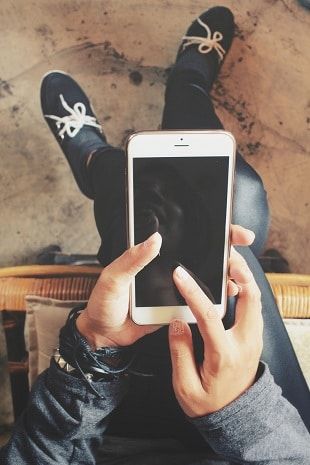 The most prevalent mode of contact between us is text messaging. Text Messages can be sent and received by anyone with a cell phone. When it comes to connecting with customers, the car sector needs to start taking text messages seriously.
Let’s start with talk. Chat is a fantastic way to capture clients who are browsing your site. The most serious issue is that customers must remain on your website in order to communicate with you. Frequently, you will be left with a ghost lead and no way to contact the customer. Even if you obtain contact information, you are unable to contact the customer via phone or email. No one picks up the phone or checks their emails these days.
The next option is email; however, text messages are considerably superior to email in every way. It’s a basic fact that text messages are read and responded to at a higher rate than emails. Here’s an article from CallHub that highlights some of the many advantages of text messaging over email. Click Here to Read the Article Let’s be honest. Email is on its way out. It’s growing less probable that your email will be opened as more spam enters the inbox.
Finally, Phone Calls, millennials, millennials, millennials, millennials, millennials, millennials, millennials They simply do not enjoy answering the phone these days. Have you ever attempted to phone your children only to be forced to text them instead? If you have to call them, it doesn’t matter how many leads you create. You’ll make ten calls, and you’ll be lucky if even one of them picks up the phone. We all know that people prefer to communicate with others via text before conversing on the phone. Phone calls are still useful; it’s just easier to acclimate folks to the phone call by sending a text message first!
We take Text Message very seriously at SIMPSOCIAL! It’s not an afterthought that we’ve tacked on to our main offering. It’s what we’re known for. To make managing and following up on Text Message leads a breeze, we’ve integrated Artificial Intelligence and sales workflows. With a 180-day lead follow-up, you can stay in touch with a consumer until they Buy or Die!
In today’s society, text messaging is simply the best means of communication. Let’s boost your website’s performance and begin taking text messages seriously. From this page, you may try out our widget. It’s the Text Us Power Button, which is placed at the bottom right of the website. It’s worth a shot. This can be easily integrated into any car website to begin producing Opt-In Text Message leads right away!
The most prevalent mode of contact between us is text messaging. Text Messages can be sent and received by anyone with a cell phone. When it comes to connecting with customers, the car sector needs to start taking text messages seriously.
Let’s start with talk. Chat is a fantastic way to capture clients who are browsing your site. The most serious issue is that customers must remain on your website in order to communicate with you. Frequently, you will be left with a ghost lead and no way to contact the customer. Even if you obtain contact information, you are unable to contact the customer via phone or email. No one picks up the phone or checks their emails these days.
The next option is email; however, text messages are considerably superior to email in every way. It’s a basic fact that text messages are read and responded to at a higher rate than emails. Here’s an article from CallHub that highlights some of the many advantages of text messaging over email. Click Here to Read the Article Let’s be honest. Email is on its way out. It’s growing less probable that your email will be opened as more spam enters the inbox.
Finally, Phone Calls, millennials, millennials, millennials, millennials, millennials, millennials, millennials They simply do not enjoy answering the phone these days. Have you ever attempted to phone your children only to be forced to text them instead? If you have to call them, it doesn’t matter how many leads you create. You’ll make ten calls, and you’ll be lucky if even one of them picks up the phone. We all know that people prefer to communicate with others via text before conversing on the phone. Phone calls are still useful; it’s just easier to acclimate folks to the phone call by sending a text message first!
We take Text Message very seriously at SIMPSOCIAL! It’s not an afterthought that we’ve tacked on to our main offering. It’s what we’re known for. To make managing and following up on Text Message leads a breeze, we’ve integrated Artificial Intelligence and sales workflows. With a 180-day lead follow-up, you can stay in touch with a consumer until they Buy or Die!
In today’s society, text messaging is simply the best means of communication. Let’s boost your website’s performance and begin taking text messages seriously. From this page, you may try out our widget. It’s the Text Us Power Button, which is placed at the bottom right of the website. It’s worth a shot. This can be easily integrated into any car website to begin producing Opt-In Text Message leads right away! 

When you consider it, there are a plethora of ways to “connect” with others today. I’m referring to right now, in the year 2018. The list goes on and on: phones, email, chat, text, social media, and so on. Of course, there are a slew of other possibilities! (How long has it been since you mailed a postcard? … and many more!)
In actuality, many of today’s tactics only generate a surface connection with another person, rather than a deep or meaningful one. Communication creates meaningful connections. Communication that is two-way and of high quality. Shared ideas, shared aspirations, and shared passions. When two or more individuals have information and exchange it, and there is active listening. The receiver, after all, is the one who determines the quality of communication. It is NOT determined by the individual who is disseminating the information. So, in order to have a genuine quality exchange, we must first speak or share, and then listen to how the person receiving it comprehended it. Then go ahead…
It’s not a one-way street when it comes to communication and connection… Otherwise, it wouldn’t be a trade, would it?
So, based on my views on connection and communication, here are three effective approaches to communicate with others.
It’s unsurprising. I’m a fan because… EVERY… SINGLE… PERSON… ON… EARTH… RIGHT… NOW. Texting is convenient, quick, and allows you to share a quick concept or idea. Texts are read by people. Texts are opened in 98 percent of cases. So, if you want to get your message in front of people’s eyes, do so. People should be texted. Another benefit is that people can read and respond to SMS at their leisure. People aren’t interested in responding when you want them to. They want to contact you when THEY have the opportunity. The issue is that texting only accounts for around 7% of our conversation, and the language is limited to words on a screen. It does not integrate all of the other elements, such as voice tone, eye contact, and body language. For me, the purpose of any text is to allow people to reply when they want and to strive toward a technique in which they can hear or see the consistency of who I am.
Video conferencing is fantastic. It allows people to relate your body language and voice tone, as well as all other aspects of your communication, to WHO YOU ARE before they even SEE you (in person). Because video is so readily available on platforms like Facebook, SnapChat, YouTube, video email, and many others, there’s no reason why you shouldn’t incorporate it into your corporate or business model. The reason why more individuals aren’t participating in video engagement right now is because they’re afraid. They are afraid of how they will appear on camera, what they will say, or that they will say something “stupid.” So, my advise is to go ahead and take a chance – practice, drill, and rehearse until you get it right, and if you goof up on the video, you can remove it BEFORE you transmit it.
The phone is still one of my favorites. It’s a fantastic way to get people’s attention. “Reach out and touch someone!” said the old AT&T commercials. The best thing about the phone is that it allows the person on the other end to form a true relationship and feel like they are getting to know you based on what you say and how you say it. It’s more personal than texting, yet it takes less time (most of the time) than making a video. People can become lethargic or acquire “phone aversion,” where they are afraid to call because they have been denied, hung up on, or shouted at on the phone. Get over it — up to 85% of your conversation can be transmitted over the phone through vocabulary and voice tone, and in most situations, if you’re in sales, the aim is to migrate from one of your other modes of communication (text, email, DM, etc) to the phone, and then in person! The single most important aspect of phone communication is that when people call back, you must pick up the phone and answer it!
These approaches are all straightforward, reliable, and profitable, especially for those of us who work in sales!
Yes, I am aware that there are plenty more excellent ways to communicate. “What about social media, Mike?” you might wonder. And, sure, I am a major supporter of almost all social media platforms. However, there is a LOT of NOISE in the social environment when it comes to connecting. People are discussing other relationships, political beliefs, and other topics that aren’t really amusing. And, on most social media sites, you get a version of the individual, which may or may not be who they are once you start connecting on a more personal level.
What other communication techniques do you use with your friends, family, and customers or clients? Do you have something that works really well for you but is a little out of the ordinary? If you do, feel free to “reach out and touch someone” in the comments section below!
 Car dealerships have only a few straightforward objectives.
They want to sell more cars, follow up with possible leads, and keep the automobiles they’ve sold to consumers in good working order. While these objectives are straightforward, effective marketing can aid in their attainment.
Text messaging is one of the best and most recent marketing tactics. Whether you sell cars, trucks, motorcycles, boats, or RVs, the techniques outlined here can help you use text messages to entice clients back into your dealership and keep them informed about the services you provide.
Car dealerships have only a few straightforward objectives.
They want to sell more cars, follow up with possible leads, and keep the automobiles they’ve sold to consumers in good working order. While these objectives are straightforward, effective marketing can aid in their attainment.
Text messaging is one of the best and most recent marketing tactics. Whether you sell cars, trucks, motorcycles, boats, or RVs, the techniques outlined here can help you use text messages to entice clients back into your dealership and keep them informed about the services you provide.

The digital retail era will characterize the decade of the 2020s. Digital retail is more crucial than ever before in the COVID-19 era, notably in the auto sector. Customers are increasingly using the internet to seek for their next automobile as the internet has taken over our life.
For consumers, the epidemic has simply accelerated this process. Not only has the future of car lead generation changed, but so has the world of vehicle shopping. Some dealerships are wary of the move, but this is a mistake. Rather than seeing digital retail as a threat, think of it as an extension of your showroom that assists you in closing the deal.
Clients (and potential clients) are now more than ever doing as much of their buying online as feasible. So, how does this affect the car industry? It means your digital shop must be as high-end as the automobiles you sell. An outstanding digital retail experience is the answer if you want to increase your reach and keep your present customers.
What is the definition of digital retailing? Your consumer can complete as much of the car-buying process as possible via digital retail. It’s about a lot more than just putting up a basic website with your inventory so your consumers may shop for a new automobile on the internet. No, it’s a lot more participatory and individualized than that.
You may also access a larger audience of potential customers with digital retail. Customers nowadays know exactly what they want before they walk into your dealership. According to Autotrader, 88 percent of car buyers do their research online. That is why, much like your dealership, your website and complete online experience must be top-notch.
Finally, digital retail allows your consumer to complete as much of the vehicle-buying process online as they want, whenever they want. It assists your consumer in making the least stressful, easiest, and most delightful transaction possible.
Customers may now build their deals entirely online, including payments, valuing their trade, reviewing and pricing add-ons, submitting a financing application, and even texting with a dealer (or another method of communication.)

Despite the fact that most consumers prefer to begin their car-buying process online, they frequently want to visit the dealership to seal the sale, see the vehicle in person, and sign the paperwork. It’s critical for car dealerships that the digital retail experience flows smoothly into the in-person experience.
The online and in-person purchasing processes should be as similar as possible. Nothing irritates a potential vehicle buyer more than spending a significant amount of time online navigating through the sales funnel only to have to start over once they arrive at the dealership. For the consumer, the digital shopping process should foster confidence and transparency.
Car dealerships benefit from digital retail.
 Customers profit from digital retail, but auto dealers benefit as well. Though auto salespeople may feel as if they are missing out on some of the process, this does not have to be the case. In fact, it can be extremely beneficial to automobile salespeople. When someone visits your dealership after spending time on your website, you now have a wealth of knowledge to work with instead of a stranger. This saves you time and gives you with a wealth of buyer data ahead of time.
In this approach, your website does not take the role of your showroom or salespeople. It simply makes everyone’s job easier!
Customers profit from digital retail, but auto dealers benefit as well. Though auto salespeople may feel as if they are missing out on some of the process, this does not have to be the case. In fact, it can be extremely beneficial to automobile salespeople. When someone visits your dealership after spending time on your website, you now have a wealth of knowledge to work with instead of a stranger. This saves you time and gives you with a wealth of buyer data ahead of time.
In this approach, your website does not take the role of your showroom or salespeople. It simply makes everyone’s job easier!

Let’s face it: digital retail in the car business may be difficult. After all, buying a car is a significant investment. It’s a lot more than just clicking “add to cart” on that $25 t-shirt you’ve been coveting on Amazon.
However, if you use digital retail appropriately, it can help you boost your dealership’s auto sales, CSI scores, and gross profitability. It also enhances your relationship with your customers and, in the long run, makes them happier. Isn’t that appealing? So, how can you make the most of digital retail? Let’s talk about the three pillars of automobile digital retail: technology, personalisation, and connectivity.
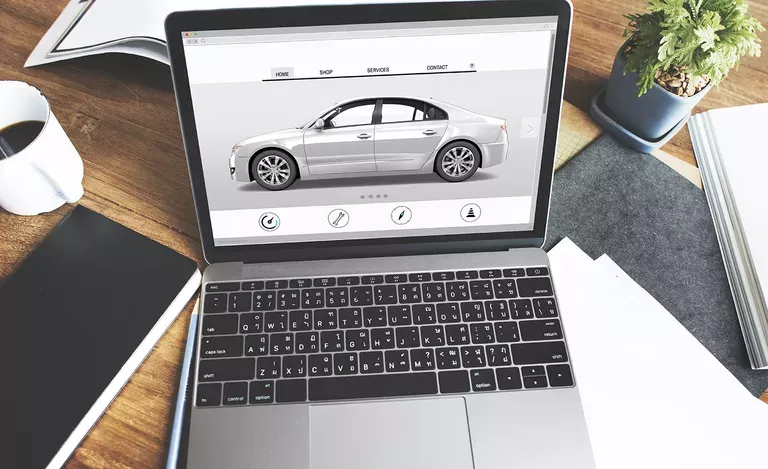
Have you tried live video conferencing with your clients? You should be if you aren’t already. We all Facetime on a regular basis these days, so we’re used to video talking on our phones. Why not use this strategy to sell autos as well? One-click live video conferencing allows you to have face-to-face conversations with customers, allowing for a more personal connection and, eventually, a sale.
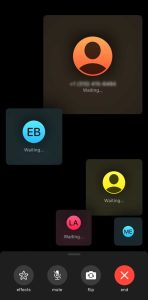 We designed our own live video conferencing technology for automobile dealers at SIMPSOCIAL. It’s one of the quickest, easiest, and most exciting ways to rapidly and easily sell more cars (even during a pandemic.) Don’t lose out on the chance to get a leg up on the competition by starting live video conferencing with your customers right now.
We designed our own live video conferencing technology for automobile dealers at SIMPSOCIAL. It’s one of the quickest, easiest, and most exciting ways to rapidly and easily sell more cars (even during a pandemic.) Don’t lose out on the chance to get a leg up on the competition by starting live video conferencing with your customers right now.
We all know that clients prefer to do business from the comfort and security of their own homes now more than ever. Car sales, unfortunately, are one of the most difficult to secure online. One-click live video conferencing is our solution. When it comes to harnessing the benefits of live video conferencing, the automotive industry is significantly behind.
When it comes to auto sales, we already know that digital retail is the way of the future. In order to meet the expectations of customers, the automotive sector must innovate and evolve as the times change. SIMPSOCIAL assists our clients in not just adapting to the issues that car dealers face, but also in growing.

Live video conferencing is the next step in digital shopping. In the coming years, live video conferencing will undoubtedly play a significant role in the automotive industry. Face-to-face interaction between car salesmen and car-buying consumers is one component that can be lost in digital retail. This link fosters confidence and, in many cases, aids in the finalization of the transaction. In 2021, just as lead generation is different, so are the strategies for making a sale.
If you’re still not convinced, consider the following advantages of video calling in the automobile industry:
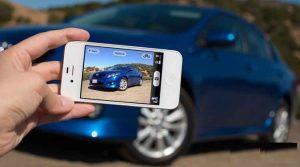
The personal relationship between the salesman and the customer is one of the most crucial components of selling cars. You won’t miss out on this relationship if you use live video conferencing. You may talk to your potential client in a secure and personal manner, answer all of their questions, and close the deal.
A video call allows you to show a customer the automobile they’re interested in in a much more engaging and dynamic way than simply giving them images.
Many car salespeople are at their best when they are able to strike up a conversation with potential customers in order to close a deal. When it comes to selling cars, video conferencing allows salespeople to focus on their skills without having to make many adjustments.
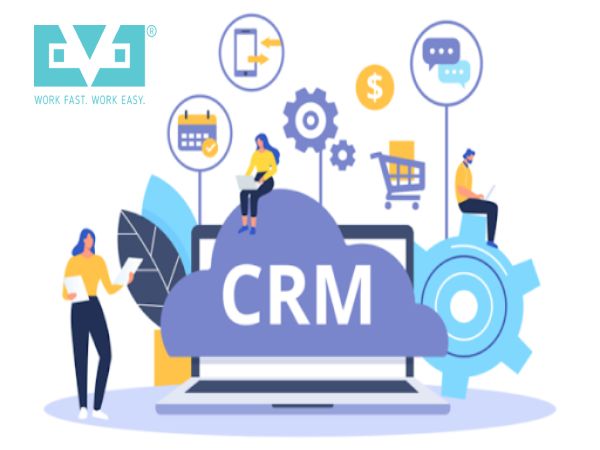 It’s time to get with the times and move to SIMPSOCIAL if you’re still utilizing a CRM. The basic conclusion is that in 2021, you won’t need a CRM to succeed in selling vehicles. Stop wasting your salespeople’s time by implementing CRMs that they don’t want to use. When you utilize SIMPSOCIAL instead of a CRM, we take care of everything. We manage your ads and follow up with your leads. We then pass the lead on to your dealership once we have a good lead for you. That means your salesmen can concentrate on what they do best: selling automobiles. (Don’t waste your time on a CRM all day.)
It’s time to get with the times and move to SIMPSOCIAL if you’re still utilizing a CRM. The basic conclusion is that in 2021, you won’t need a CRM to succeed in selling vehicles. Stop wasting your salespeople’s time by implementing CRMs that they don’t want to use. When you utilize SIMPSOCIAL instead of a CRM, we take care of everything. We manage your ads and follow up with your leads. We then pass the lead on to your dealership once we have a good lead for you. That means your salesmen can concentrate on what they do best: selling automobiles. (Don’t waste your time on a CRM all day.)
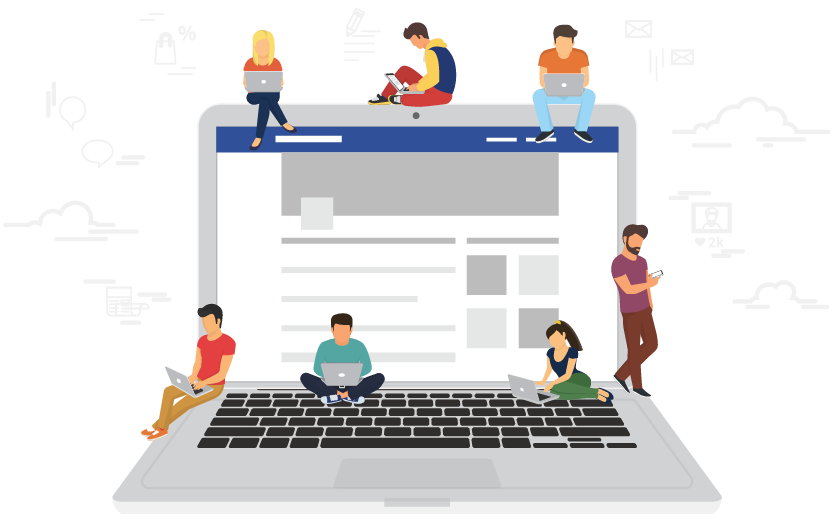 “How come my Facebook auto advertisements aren’t working?” Obviously, you came upon this article because you’re annoyed. Your auto dealership’s Facebook advertising aren’t doing as well as you’d anticipated, and you’re not sure why. The answer is probably not what you expect. We’ll explain why your Facebook ads aren’t performing as expected. We’ll also show you how to use SimpSocial’s social media marketing to really sell more cars.
Making Facebook advertising by a car salesman
“How come my Facebook auto advertisements aren’t working?” Obviously, you came upon this article because you’re annoyed. Your auto dealership’s Facebook advertising aren’t doing as well as you’d anticipated, and you’re not sure why. The answer is probably not what you expect. We’ll explain why your Facebook ads aren’t performing as expected. We’ll also show you how to use SimpSocial’s social media marketing to really sell more cars.
Making Facebook advertising by a car salesman
 The car sector is in transformation as we approach the end of 2021. Looking ahead to 2022, now is an excellent opportunity to take a top-down, worldwide look at the car sector. Over the last few years, we have been impacted more than most other industries in the United States. While people continue to purchase automobiles, the manner in which they do so has altered considerably as a result of the COVID-19 epidemic, new technologies, and other causes. We’ll tell you everything you need to know about the auto industry’s worldwide outlook and how to position your dealership for success in the months — and years – ahead.
The car sector is in transformation as we approach the end of 2021. Looking ahead to 2022, now is an excellent opportunity to take a top-down, worldwide look at the car sector. Over the last few years, we have been impacted more than most other industries in the United States. While people continue to purchase automobiles, the manner in which they do so has altered considerably as a result of the COVID-19 epidemic, new technologies, and other causes. We’ll tell you everything you need to know about the auto industry’s worldwide outlook and how to position your dealership for success in the months — and years – ahead.
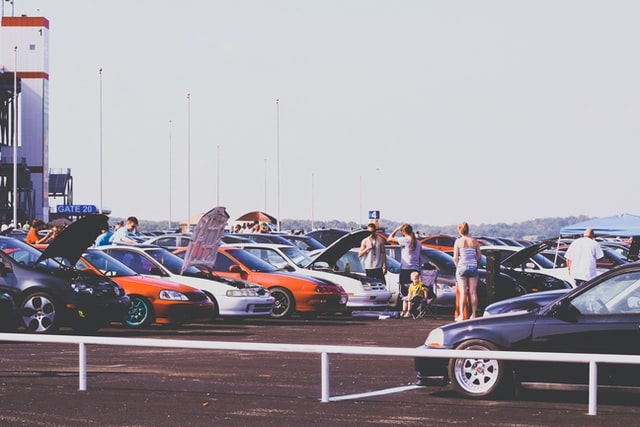 Since the COVID-19 epidemic emerged in the United States in the spring of 2020, the auto industry has been a rough ride. Unfortunately, it’s not yet time to unbuckle your seatbelt. The “Great American Car Shortage” is still going on as we look forward to 2022. Many automakers were forced to close their doors in 2020, and dealerships swiftly followed suit or changed their focus to live video-conferencing with clients and other alternatives. Consumers bought cars at a faster rate than automakers could create them when dealerships reopened. Though the worldwide outlook for the auto business may appear grim, there are some benefits for dealerships. In fact, some dealerships are benefitting from the scarcity of chips.
Since the COVID-19 epidemic emerged in the United States in the spring of 2020, the auto industry has been a rough ride. Unfortunately, it’s not yet time to unbuckle your seatbelt. The “Great American Car Shortage” is still going on as we look forward to 2022. Many automakers were forced to close their doors in 2020, and dealerships swiftly followed suit or changed their focus to live video-conferencing with clients and other alternatives. Consumers bought cars at a faster rate than automakers could create them when dealerships reopened. Though the worldwide outlook for the auto business may appear grim, there are some benefits for dealerships. In fact, some dealerships are benefitting from the scarcity of chips.
 Perhaps you’re a smaller dealer who is unsure if SimpSocial’s system will work for you. I’m happy to report that I have some wonderful news for you. SimpSocial’s system performs as well as — if not better than — that of large dealerships. Why? Because you can do everything a larger dealership with a large staff can do with SimpSocial, and even better. You don’t need to hire ten people and spend all day on the phone to follow up on leads. Rather, we send the leads directly to your dealership. At SimpSocial, size doesn’t matter. We assist car dealerships all around the United States in increasing vehicle sales. It doesn’t matter if you’re small or big. We can also assist you.
a lot of small car dealers
Perhaps you’re a smaller dealer who is unsure if SimpSocial’s system will work for you. I’m happy to report that I have some wonderful news for you. SimpSocial’s system performs as well as — if not better than — that of large dealerships. Why? Because you can do everything a larger dealership with a large staff can do with SimpSocial, and even better. You don’t need to hire ten people and spend all day on the phone to follow up on leads. Rather, we send the leads directly to your dealership. At SimpSocial, size doesn’t matter. We assist car dealerships all around the United States in increasing vehicle sales. It doesn’t matter if you’re small or big. We can also assist you.
a lot of small car dealers